1 44 SPARK LIGHTS UP DESIGN 99 FINE LINE IN SAUDI ARABIA 74 ESG LIFTS ASIA REAL ESTATE MELBOURNE’S FORMIDABLE FRUIT 28 KANDAL BURNS BRIGHTLY 62 SENIOR SERVICE IN ASIA 82 USD10; SGD13; IDR135,000; MYR41; THB330 NO. 175 asiapropertyawards.com/newsroom






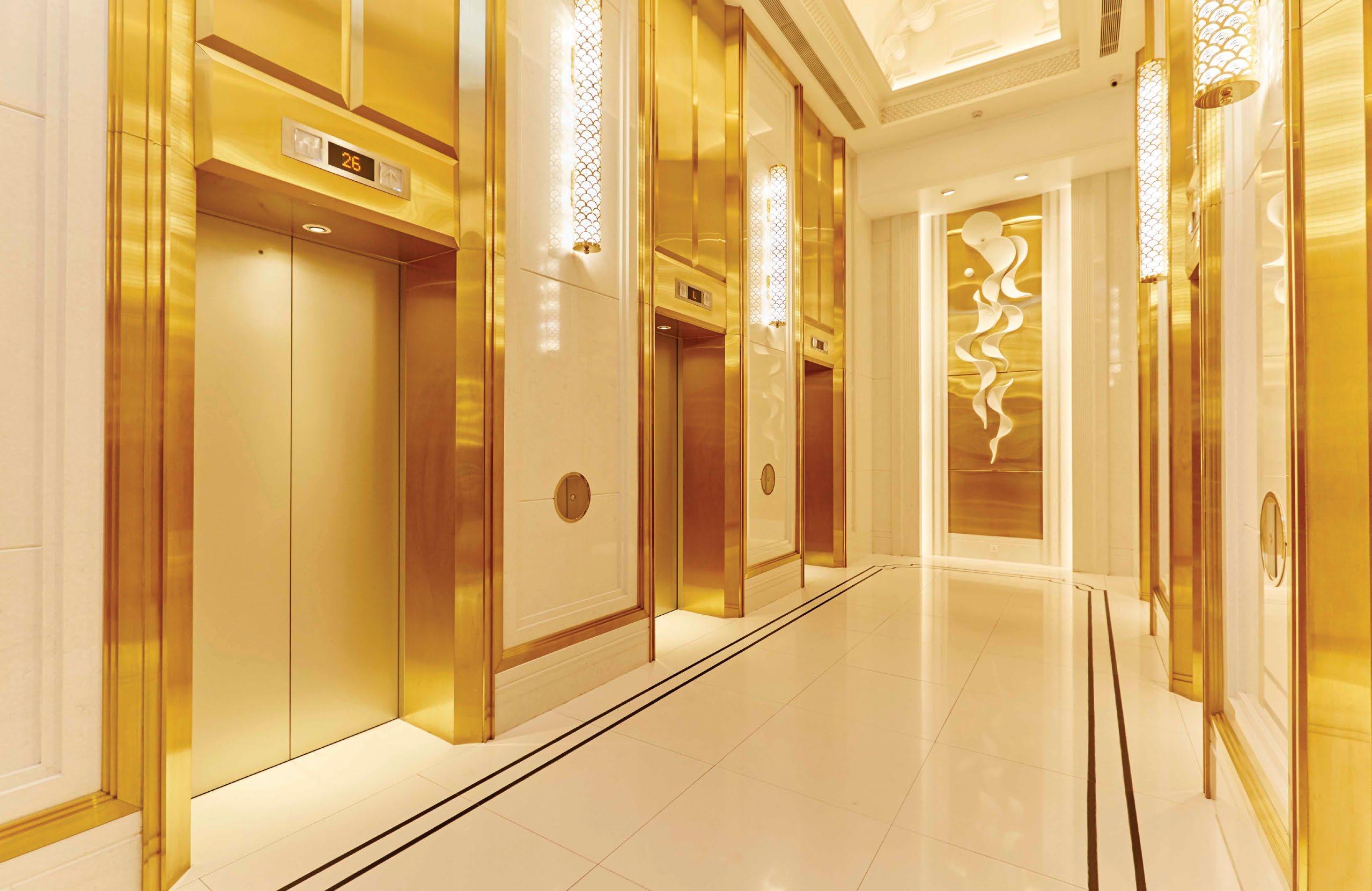

4

5


BEST SMART BUILDING DEVELOPMENT HIGHLY COMMENDED Prompt88 Health Land by Pattana Property Development Prompt88 Health Land by Pattana Property Development BEST WELLNESS LIFESTYLE DEVELOPMENT WINNER Leasehold 30 Years at 160,000 USD www.prompt88healthland.com Sales contact : +66 (0)2 - 027 - 8888
Prompt 88 is a gathering of specialist doctors, engineers, architects, designers, leading hotel management teams with a new concept of accommodation rather than living in order to live comfortably, healthy and safely.

Prompt 88 have been carefully designed according to Wells certification & Universal Design standard.
Complement this with a range of professional medical and wellness services. The residence can live in or treat as a home-away-from-home, with extra care in the way of health and wellness, by expert. Enjoy life, and health-focused refresh, reboost or retreat to rejuvenate. They can be free to do as they please, when they please.

The place that’s convenient to travel to, with the buzz of city and avoiding the intensity that sometimes surrounds.
* Note prices and conditions according to this document are subject to change without prior notice.
7


8 www.sinarmasland.com Sinar Mas Land @sinarmas_land @sinarmas_land

9
Sinar Mas Land
BEST DEVELOPER (ASIA)
BSD City by Sinar Mas Land
BEST GREEN DEVELOPMENT (INDONESIA)
BSD City by Sinar Mas Land
BEST GREEN DEVELOPMENT
WINNER
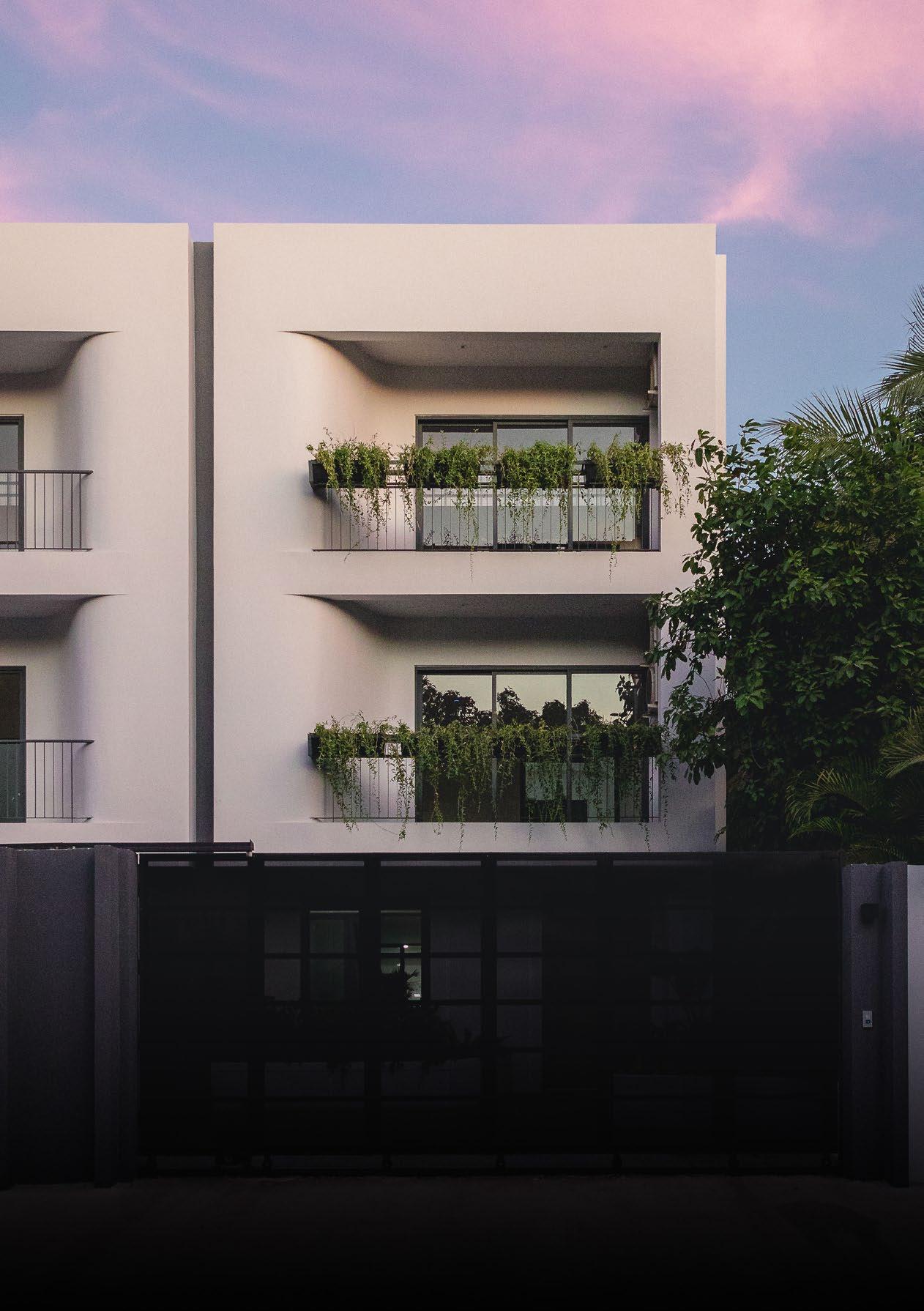
Crafting thoughtfullydesigned spaces for the modern local lifestyle.
Kambujaya is a newly established boutique lifestyle and property development firm aspiring to build design oriented and unique living spaces for the Cambodian market.



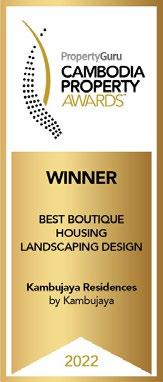
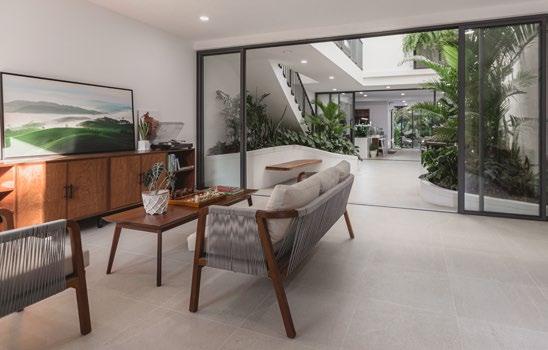
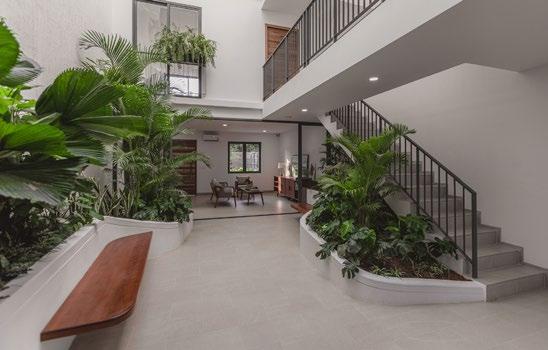


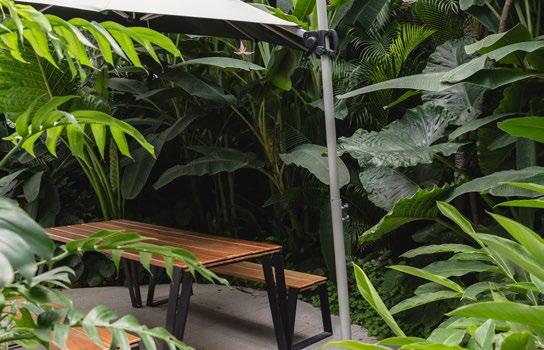

We were created to meet the growing demands of the Cambodian middle class who are seeking natural greenery, higher quality, and well-designed living solutions that enrich the rhythms of everyday life while building homes that are beautiful, functional, and responsive to their environment.
Our ultimate goal is to enrich the lives of those living in a Kambujaya home because we recognize the influence that beautiful spaces have on people’s mental, physical and emotional wellbeing. It matters to us that our homes are not just a number on a street, but a sanctuary of space. This understanding informs our design philosophy which we apply to every Kambujaya project.
Kambujaya Development Co., Ltd
11
kambujaya.com
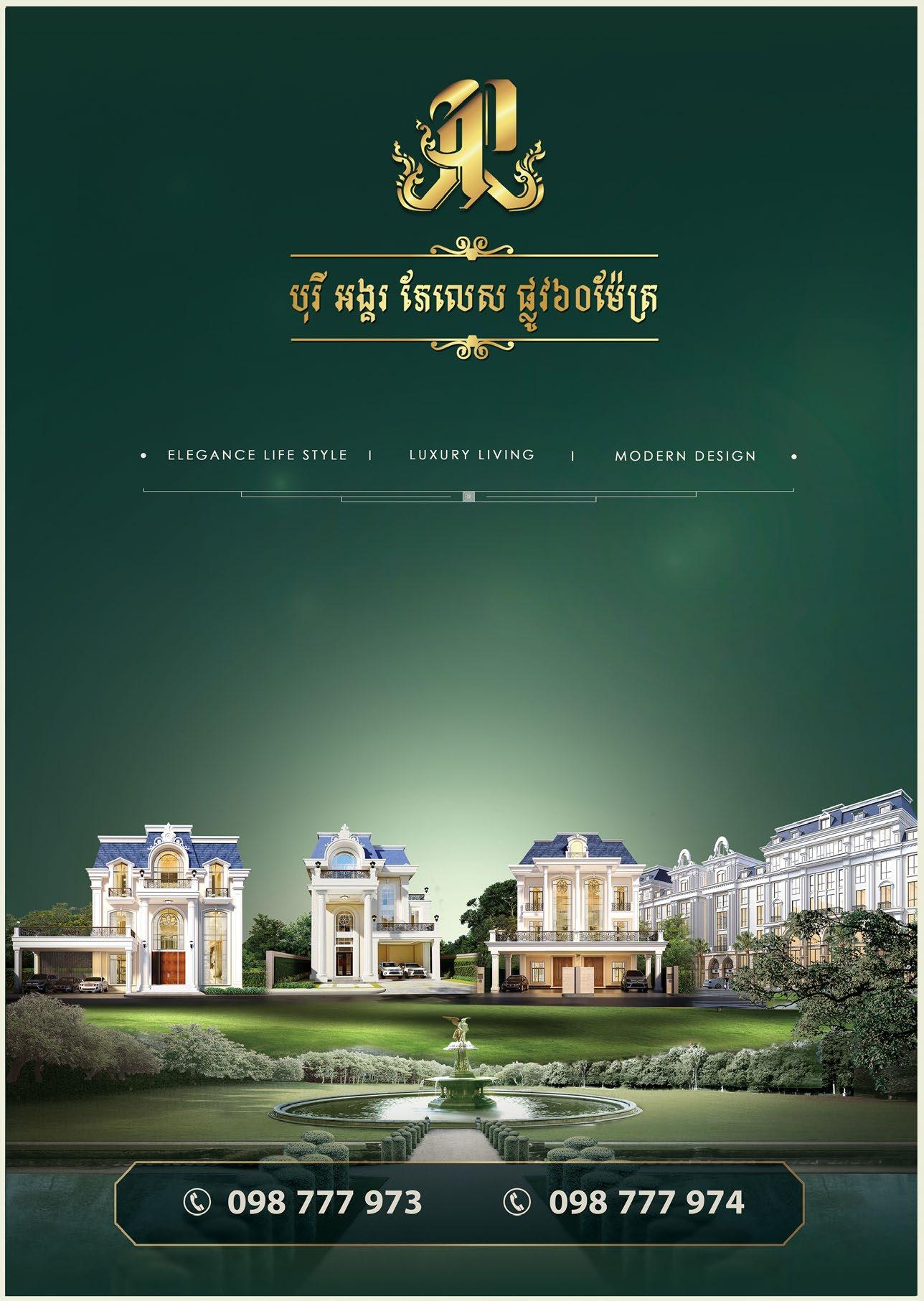

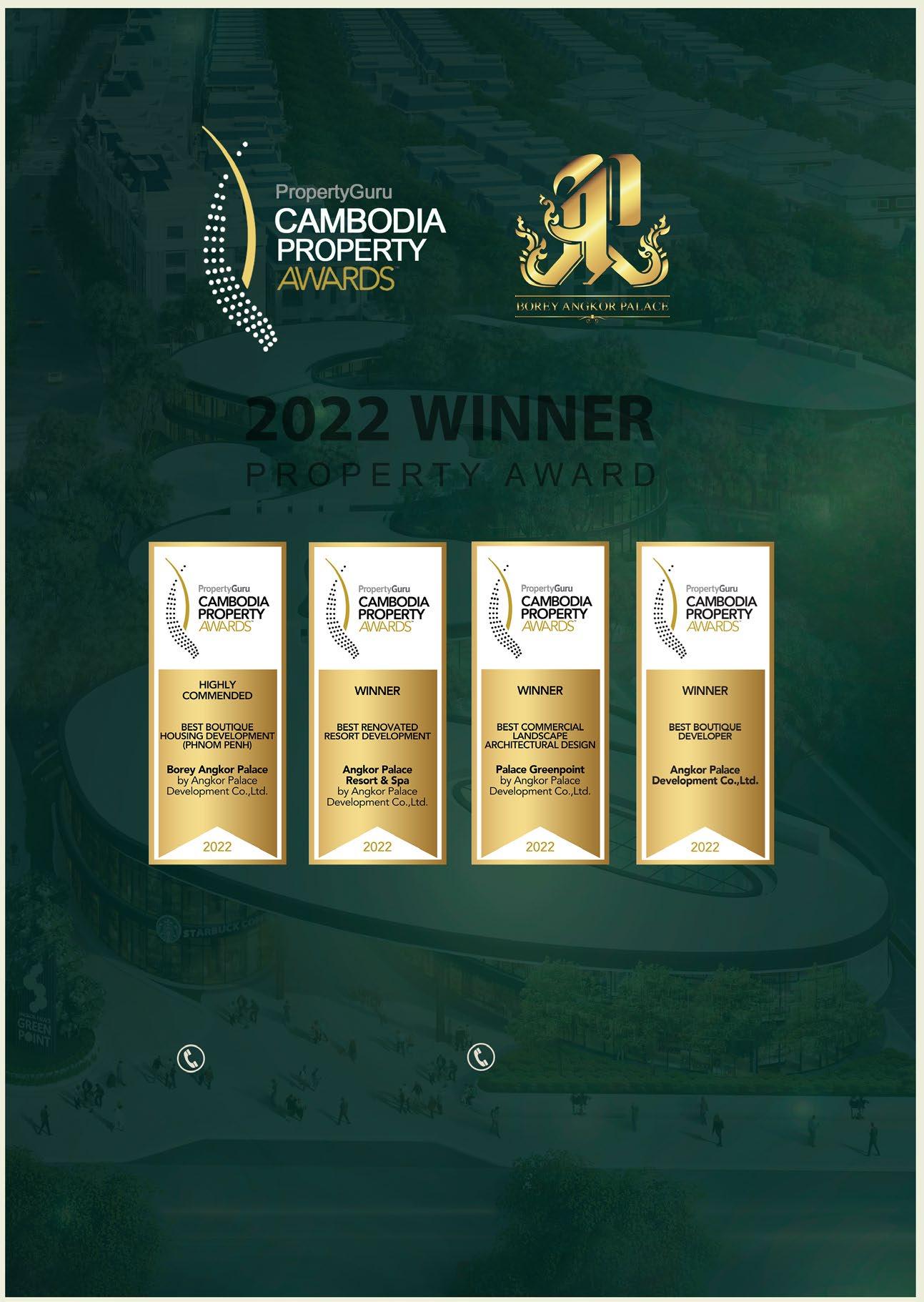


 Publisher Jules Kay
Publisher Jules Kay
Editor Duncan Forgan
Deputy Editor
Al Gerard de la Cruz
Senior Editor
Richard Allan Aquino
Digital Editor Gynen Kyra Toriano
Editorial Contributors
Liam Aran Barnes, Bill Bredesen, Diana Hubbell, Steve Finch, George Styllis, Jonathan Evans
Head of Creative
Ausanee Dejtanasoontorn (Jane)
Senior Graphic Designer Poramin Leelasatjarana (Min)
Media Relations & Marketing Services Manager
Nate Dacua
Media Relations & Marketing Services Executive
Piyachanok Raungpaka
Marketing Relations Manager
Tanattha Saengmorakot
Senior Product Lifecycle & Brand Manager
Marco Dulyachinda
Sales Director
Udomluk Suwan
Regional Solutions Manager
Orathai Chirapornchai
Regional Manager of Awards Sponsorship
Kanittha Srithongsuk
Solutions Manager (Australia)
Watcharaphon Chaisuk (Jeff) Solutions Manager (Cambodia)
Phumet Puttasimma (Champ)
Solutions Manager (Greater Niseko)
Nyan Zaw Aung (Jordan)
Solutions Manager (India and Sri Lanka)
Monika Singh Solutions Manager (Indonesia)
Wulan Putri
Senior Account Manager (Indonesia)
Oky Prasetya
Senior Solutions Manager (Mainland China, Hong Kong and Macau)
Huiqing Xia (Summer)
Solutions Manager (Mainland China, Hong Kong and Macau)
Kai Lok
Assistant Manager, Awards (Malaysia and Mainland China)
Samuel Poon Senior Solutions Manager (Philippines)
Marylourd Pique Solutions Manager (Philippines)
Maria Elena Sta. Maria Awards Manager (Singapore)
Alicia Loh Solutions Manager (Thailand)
Kritchaorn Rattanapan
Rattanarat Srisangsuk
Solutions Manager (Vietnam)
Quan Nguyen (Val)
Developer Solution Sales Manager (Vietnam)
Dinh Van Tuan Anh (Kei)
Business Development Executive, Sponsor Partnership Priyamani Srimokla (Priya)
Distribution Manager
Rattanaphorn Pongprasert
General Enquiries
awards@propertyguru.com
Advertising Enquiries petch@propertyguru.com
Distribution Enquiries ying@propertyguru.com
PropertyGuru Property Report is published six times a year by
© 2022 by PropertyGuru Pte. Ltd. All rights reserved. No part of this publication may be reproduced without prior permission of the publisher
KDN PPS 1662/10/2012 (022863)
14
ISSUE 175
w w w hl b. globa l

CONTENTS
22 Gadgets Get into the swing of the season with great tech gifts


24 Trends
‘Tis time to deck the halls with fine furnishings
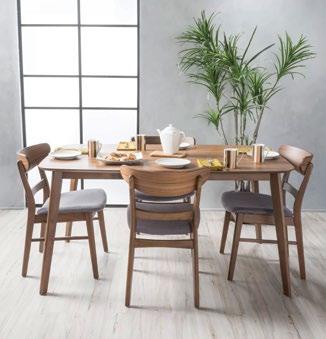
26 Style We’ve got you covered with these wintersports essentials
28
Project Confidential: Work bearing fruit
With architectural inspiration from the fig, 380 Melbourne is one of the Australian city’s most multi-faceted private projects
36
Interview: Circle of trust
Vivin Harsanto of JLL Indonesia aims to ensure that her firm remains a reliable partner for clients as they negotiate the post-pandemic world

44
Design Focus: Backwards and forwards
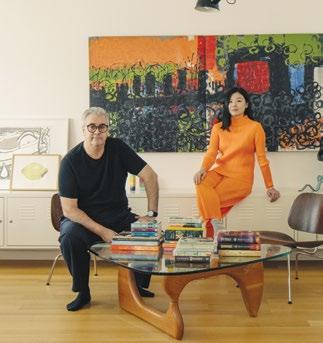
SPARK Architects has established itself as one of Asia’s leading practices by harnessing social imperatives and sustainability with trendsetting design

16
| Issue 175
62
Neighbourhood Watch: Kandal
The home province of Cambodia’s former capital is an economic powerhouse and a rising destination for real estate investment

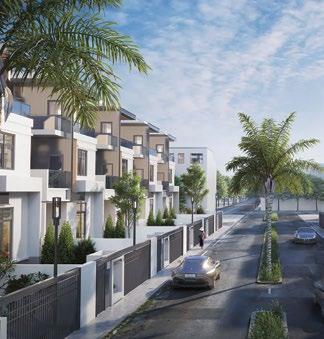
64
Special feature: New dawn fades
Post-pandemic optimism around Southeast Asia has given way to concerns over inflation, currency depreciation, and rising interest rates
74
Special feature: Property for the people

Players in the real estate industry around Asia are getting serious about investing in environmental, social, and governance (ESG)
82
Special Feature: Growing old gracefully
Ageing societies in Southeast Asia mean that catering to the requirements of mature investors will be a key challenge for developers

96
Dispatch: Rights and rungs
Decriminalisation of gay sex was a landmark decision, but LGBTQ+ couples in Singapore still face major barriers in accessing affordable real estate

99
Dispatch: Line in the sand
The fantastical centrepiece of Saudi Arabia’s planned Neom megacity, The Line does not lack ambition or scale

17






Join the region’s most exclusive real estate honours, celebrating 18 years of excellence in 2023 AsiaPropertyAwards.com SHINE BRIGHT LIKE A WINNER
EDITOR’S NOTE

And there we have it: the end of another year.
As 2022 started most of us in Asia were still largely confined to our home countries and chosen bases, with pandemic restrictions making travel a chore as much as a pleasure. Nations around the region have opened over the course of the year, and people are moving freely again.
Indeed, as tourists flock back to Asia’s paradise beaches, pulsing cities and showstopping attractions it can be easy to discount the collective trauma that has just been inflicted upon us.

But post-pandemic Asia is a vastly altered place — both for better and for worse. In the column of positives, one can point to a trend for sustainability that is front of mind for everyone from developers to investors. On the flipside, Asia is destined for a rocky period ahead as the expected global downturn begins to bite.
In this concluding issue of the year, we round up some of the most pressing issues facing the real estate industry as we head towards 2023. These include the growing importance of environmental, social, and governance (ESG) and how markets around Southeast Asia are primed to meet post-pandemic challenges like China’s property slump.
Elsewhere we head to Melbourne for a deep dive on one of Australia’s most exciting new projects, meet with SPARK Architects in Singapore and run the rule over The Line, Saudi Arabia’s fantastical planned linear city in the desert.
Enjoy! Duncan Forgan Property
Report
duncan@propertyguru.com
20
Issue 175


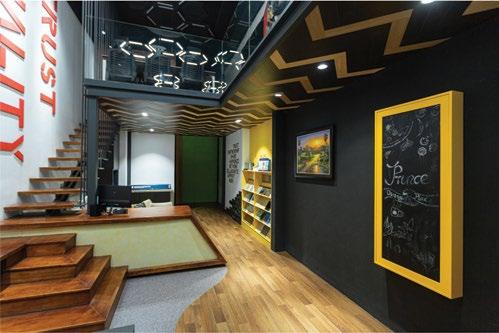






21
SOMETHING MAGICAL
Get into the swing of the season of giving with tech wonders that are high on the Christmas wish list
WE’RE LEVITATING
Created by John Fiorentino of Gravity Blanket fame, the Moon Pod is not your ordinary beanbag. Filled with responsive highdensity beads, this seat gives you the sensation of floating as opposed to sinking. Its dual-shell membrane responds to any body shape and movement.
USD399, moonpod.co

22 DETAILS | Gadgets
PAPER MEMORIES
Give the gift of visuals with a trusted name in photography: Kodak. The company’s Mini Shot 3 Retro wireless instant camera is built with an integrated printer and Bluetooth connectivity, meaning you can print pics directly from your phone.

USD153, shop.kodakphotoprinter.com
GAME ON

No gaming console? No problem. The Backbone converts your phone into one with tactile control buttons and joysticks, complete with a 3.5mm headphone jack. The gizmo plugs into your phone via a USB-C or Lightning port, ideal for both Android and iOS users.
USD100, playbackbone.com
EAR WARMERS

Swap your Apple earphones for the company’s innovative wireless over-ear headphones. The AirPods Max has a universal fit, its knit-mesh headband canopy reducing on-head pressure. And with their acoustically engineered memory foams, the Airpods Max’s ear cushions create an immersive seal for highfidelity sound.
USD549, apple.com

AUTONOMOUS LIVING
Give the gift of cleanliness with Samsung’s Jetbot mop. With two swiftly spinning pads, the robotic mop can navigate all non-carpeted flooring types, including tile, hardwood, vinyl, and laminate. It can also run for almost an hour without refilling its tanks.
USD135, samsung.com
23
OOH FA LA LA
‘Tis the season to deck the halls with furnishings that make your home look its festive best
SHOW PIECE
A good sideboard will show off your fancy dishes and dishware at Christmas dinner, and Mercury Row’s Brumit steps up to the occasion. Featuring flared, angled legs and chic slatted sliding doors, the MDF-and-laminate sideboard offers four drawers to store cutlery and napkins.
USD1,039, wayfair.com

24 DETAILS | Trends
TALL ORDER
Standing 7.5 feet high, National Tree Company’s Feel Real Downswept Douglas Fir commands attention at any highceilinged home this season. It has almost 2,000 polyethylene branch tips, lending it a lifelike look, plus built-in LED bulbs twinkling all-white to multicolour.

From USD593, amazon.com
FAB FOURSOME
Christmas dinner for four? Don’t fret with the Wade Logan Armgart, a midcentury-style dining set with four cushioned chairs and a table in matching wood finishes. The tabletop is made of faux wood with walnut veneer, offering a perfect backdrop to your holiday dinner.

USD765, wayfair.com
CURB APPEAL

Tell the neighbourhood that your home means business this season with Frontgate’s Christmas Cheer cordless wreath on your front door. Tied with a bright red velvet bow in gold lining, the wreath has sprays of Scotch and pistol pine, noble fir, pinecones, and red berries.

From USD69, frontgate.com
COUCH SURFER
Available in a multitude of colours from teal to peony, Swyft’s three-seater Model 04 sofa is great for the holidays. It moonlights as a standard double bed, ideal for friends who come to crash at your place when the Christmas party’s over.
GBP2,295, swyfthome.com
25
ON A HIGH
From the slopes of Niseko to the pistes of Yongpyong, we’ve got you covered with these wintersports essentials
GRACEFUL RUN
If skiing is your thing, Line’s Blade freeride skis offer outstanding torsional stability and enhanced grip with their thin waists and giant shovels. Manufactured with Directional Flex tech, the skis give riders great lift above deep snow and outstanding control at fast speeds.
USD800, lineskis.com

26 DETAILS | Style
ALIEN LOVER
Handcrafted with clean energy in Capita’s ‘Mothership’ manufacturing facility in Austria, the Mega Merc may as well be the spacecraft of snowboards. It shreds through any terrain with an FSC-certified core of ultralight post-consumer recycled plastics, among many other powerful features.
From GBP685, capitasnowboarding.com

OUTER LIMITS
A tough top for alpine temperatures, Mountain Hardwear’s Boundary Ridge jacket features a waterproof, three-layer Gore-Tex shell; helmet-compatible hood; pass pocket on the sleeve; and internal powder skirt. It even comes with the Recco Avalanche Rescue Reflector, alerting emergency responders to your location.

USD474, mountainhardwear.com
HEAD GAME
Put safety first on the slopes with Sweet Protection’s Switcher Mips ski and snowboard helmet. With Mips technology, the helmet reduces rotational forces on the brain. It features 22 vents and great shell construction, plus Impact Shields liners to offer optimum shock absorption.
EUR250, sweetprotection.com

CHROMATIC DREAMS
Smith Optics updates its famed Squad goggles with the Mag system, featuring multiple magnetic contact points and locking mechanisms, as well as two interchangeable ChromaPop lenses. With straps made from recycled nylon materials, the goggles help you see and look good at the highlands.
From USD240, smithoptics.com

27
WORK BEARING FRUIT
With architectural inspiration from the fig, 380 Melbourne is one of the Australian city’s most multi-faceted and pedestrian-friendliest private projects
 BY AL GERARD DE LA CRUZ
BY AL GERARD DE LA CRUZ

Across the millennia, the fig has held a fascination for artists, creatives, and storytellers.
When designing 380 Melbourne, Australian design practice Elenberg Fraser recalled D.H. Lawrence’s poetry about the “very secretive fruit.”
The two-tower development, jutting above the heart of Melbourne’s central business district, encloses everything from apartments to Voco hotel rooms and a multitude of amenities, all under one architectural skin.
Interestingly for true blue Melburnians, the project serves as an extension of Timothy Lane, slicing through the site in the grand tradition of the city’s laneways.

“We are interested in the fig because of how it contains thousands of little seeds,” says Matt Chamberlain, associate director at Elenberg Fraser. “We saw this large mixed-use project almost as a shell that contained
a variety of different uses and an extensive building population of all sorts of different people.”
Hiap Hoe was originally set to develop the site in a joint venture with Melbourne-based family business Brady Property Group. The Singaporean developer purchased the site, a former commercial carpark, in 2013 and obtained a planning permit with Elenberg Fraser through town planner Urbis.
In 2016, Hiap Hoe exited the venture, with Elenberg Fraser staying on as architect. Brady Property Group “happily” acquired full ownership of the site, which spans an entire block between Lonsdale and Little Lonsdale Streets, reports Daniel Brady, sales director of Brady Property Group.
“From our proven experience, it is a high-demand location offering an unrivalled lifestyle for residents,” he says.
30
MASSIVE STRUCTURAL MEMBERS AND INTRICATE STEELWORKS WERE INTEGRAL TO THE 714-FOOT-TALL PROJECT. IMAGE CREDIT: ELENBERG FRASER
The commercial carpark that once stood on site proved a hindrance, blocking Timothy Lane from emerging out onto Lonsdale Street. The development eliminates this dead end, allowing pedestrians to continue down the laneway, flanked by open lobbies, F&B establishments, and retail spaces, through the towers’ podium. “In extending Timothy Lane, the development created a new thoroughfare, instilling new life to the neighbourhood,” says Brady.
But the site was unusually long and slender, challenging delivery of building materials to the centre of the project that began construction in 2018. The laneway extension itself challenged the contractors, assembled by the team of Brady Construction, since existing authority services in Timothy Lane impeded excavation.

“At all stages of construction, we notified all the adjoining building owners of our construction program, including any street disruptions or closures, to establish a smooth
relationship with all owners,” reports Brady.
Matching the scale of the streetscape, the podium builds up right to its boundaries with the surrounding narrow streets. With their wider setback, the two towers make for a grand urban gesture seen from many parts of the metropolis. Since many neighbouring buildings are heritage-listed, keeping nearby sites from being built out in the indefinite future, tower occupants are assured of great, unobstructed views, too.
“What I love about this project is that it works well at both an urban scale and a human scale,” says Chamberlain.
The podium was designed as a metaphor for the fig from pre-pollination to maturity. As seen from the laneway, the interior spaces subtly remind onlookers of fig seeds, from the geometries of the chandeliers and lighting installations to the colours of the stones.
31

32
THE BASE OF THE TOWERS APPEARS AS FLOATING, CANTILEVERED BOXES, FESTOONED WITH LANDSCAPING FROM THE EXTENDED LANEWAY BELOW TO THE PODIUM ROOFTOP ABOVE. IMAGE CREDIT: DYLAN JAMES
Expressed as individual volumes, the podium cantilevers in and out, creating sheltered spaces and allowing pockets of landscaping to poke in between the box-like structures. Higher floors would be facing the street’s tree canopies, for instance. Along the northern stretch of the laneway, a vertical garden spills six storeys down the podium wall, grow lights sustaining them.
“The idea was to represent each program as a single volume and shift them around to break down the delineation between public and private space,” says Chamberlain.
The development of the volumes involved unique structural solutions, including a giant diagonal steel brace to support a large, cantilevered volume from a mega column. Working with the structural engineers of Robert Bird Group, the design team realised the major cantilevers in such a way that the underlying structures are less noticeable. The volumes sport fine detailing around their top and bottom plates, the laneway pedestrians catching themselves reflected on their lustrous stainless steel undersides.
The proportions of the superstructure conformed with the unusually long, slender site. The 218-metre-high tower form is effectively two separate buildings adjoined together, with two vertical lift cores that result in highly efficient floor plates. The shorter South tower partly houses Australia’s first new-build Voco hotel while the rest of its floors and the entirety of the North tower are for residential use.
Working in a series of iterative workshops with Robert Bird, Elenberg Fraser sketched out towers that are longer than they are wide. “What that does structurally is that the broad face can catch a lot of wind load, which sort of wants to tip the building over,” says Chamberlain. “So, we needed to employ connected mega columns, which almost form an extension to the core to give the structure a lot of rigidity in an east-west direction. It’s almost catching a lot of the wind like a sail.”
The slenderness ratio of the towers ultimately benefits their interiors. The shallow perimeter-tocorridor depth maximises daylight penetration into the core.
The façade ripples out in a series of room-wide curved glass bay windows, the modules streaking diagonally across the façade in stacks of eight. These windows protrude up to one metre from the primary façade line, affording occupants
33
WE ARE INTERESTED IN THE FIG BECAUSE OF HOW IT CONTAINS THOUSANDS OF LITTLE SEEDS. WE SAW THIS LARGE MIXED-USE PROJECT ALMOST AS A SHELL THAT CONTAINED A VARIETY OF DIFFERENT USES AND AN EXTENSIVE BUILDING POPULATION OF ALL SORTS OF DIFFERENT PEOPLE
180-degree views and the feeling of stepping beyond the building edge.
Some famous hotel buildings helped inspire the architects to ideate the modularised façade, which is cleverly referenced in the shape of the door handles and other details of the property. “Just the spatial experience of sitting out in that bay window and projecting beyond the façade formed as an inspiration to us to apply modern construction techniques and see what we could do by just using that as a starting point,” says Chamberlain.
“The façade creates a unique spatial experience and helps differentiate this project from a lot of the other apartment projects globally.”
Every curved bay window was designed and engineered to have a different radius than the one above it, ensuring no aperture has a visual connection to neighbouring apartments. With technology imported from Germany, a digital bending machine was used to manufacture the 6,000 curved glass panels in China. The glass supplier also developed a special, low-E coating for the panels, whose dichroic nature allows the façade to shift colours from different angles.
The building’s profile curves accordingly with the bay window system. Brady Construction employed a series of steel edge profiles and reused them up the building as the project progressed. “It’s fairly complex geometry, but achieved in a pretty simple way,” remarks Chamberlain.
With three static tower cranes to expedite the construction, 380 Melbourne was completed in 2021 at a cost of AUD300 million (USD191 million). After pandemicinduced delays, Voco Melbourne Central finally opened within the development in 2022, with general manager Erik Stuebe calling the property “a true original.”
The location is one true selling point. Not only have the units served as city pads for workers in the CBD but also as permanent homes, reports Brady.
With guests, residents, and the public at large to harvest its offerings, the project has truly borne fruit. “Over the last decade we’ve seen a real growth in the number of residents who are moving into the city,” says Chamberlain. “The attraction is just being amongst that vibrant city life.”

34
THE APARTMENT INTERIORS MIRROR THE PROTECTIVE, RESTORATIVE LAYER OF THE FIG SKIN AND THE THOUSANDS OF SEEDS IT HOUSES. IMAGE CREDIT: DYLAN JAMES
SEEDS OF PROGRESS
Consistency is one of 380 Melbourne’s strongest suits. Australian design practice Elenberg Fraser used the fig as a conceptual driver for a lot of the decision-making throughout all the interiors.
“The syconium contains thousands of little seeds within it,” says Matt Chamberlain, associate director at Elenberg Fraser. “We saw that as a neat metaphor for a large mixed-use project of this scale and used the figure as a conceptual driver, particularly through the interior design.”
Throughout all the common areas, the project uses plenty of natural stone products in pinks, reds, purples, and blacks—the colours of the fig. The stones, mostly quarried from India or, in the case of the Terrazzo, imported straight from Italy, can be seen over the indoor flooring, which transitions from one granite to another in coloration.

The apartments themselves are designed to be like a slice of the fruit. The palette is reminiscent of the natural tones of the fig’s skin as well as the fleshy white insides, complementing the engineered oak timber floorboards. Splashes and tones of colour burst out of drawer linings and are artfully concealed within the joinery.
“Even down to the smallest details, like inside the cupboards, we used the colourations of the fig,” says Chamberlain.
35
COMMUNAL AREAS SPREAD OUT IN TEXTURAL REDS AND PINKS, AS IF TO MIMIC THE INSIDES OF THE FIG. IMAGE CREDIT: DYLAN JAMES

36
Circle of trust
Head of the advisory group at JLL Indonesia Vivin Harsanto aims to ensure that her firm remains a reliable partner for clients as they attempt to negotiate the postpandemic world
 BY BILL CHARLES
BY BILL CHARLES
37

38
JAKARTA MAY BE SET TO LOSE ITS STATUS AS CAPITAL OF INDONESIA, BUT IT WILL REMAIN THE COUNTRY’S MOST ACTIVE HUB FOR PROPERTY INVESTMENT IN THE FORTHCOMING DECADES
Like many countries post-pandemic, Indonesia is working to pivot economically to a position of stronger growth following the challenges of the past few years.
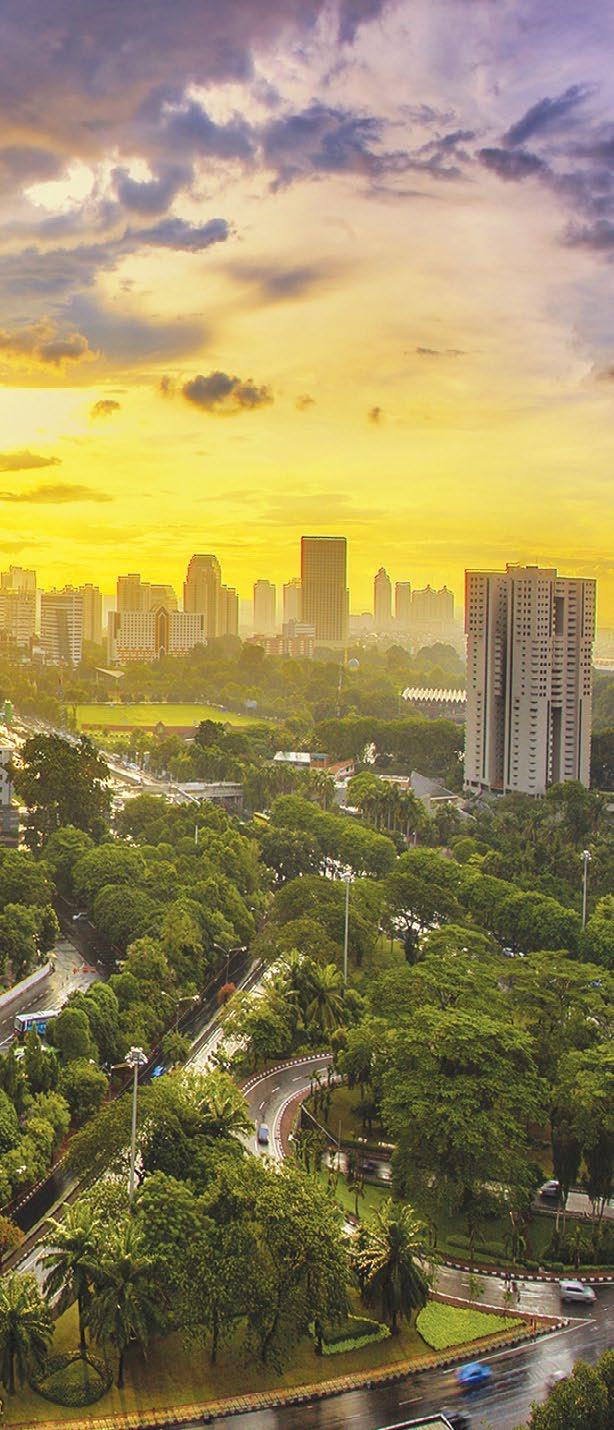
And in her role as head of the advisory group at JLL Indonesia, Vivin Harsanto oversees research and strategic consulting while advising on property development and investment in both the public and private sectors. Harsanto sees a renewed emphasis on wellness and sustainability, along with technological innovation and recognition of a changing business landscape, as key drivers influencing the country’s real estate markets.
Harsanto, who joined JLL Indonesia in 2008, has 25 years of experience in the real estate industry, working on projects across all segments and in most major cities throughout Indonesia. She is an expert on development strategies, asset optimisation, and investment advisory, in addition to strategies related to the infrastructure sector.
39
The Jakarta government has created the city to be the centre of business and trading in the national, regional, and global economy. It will continue to be a driving force
Looking to the year ahead, Harsanto says about her role: “We will continue to help shape the future of real estate by providing advice to our clients and remain a trusted partner for them in all aspects of their real estate needs, whether that’s their need for valuation planning, marketing, property management, and investments or technology in the property sector.
“We also continuously promote the importance of sustainability, aligning with global and government

initiatives,” she adds. “Above all, we want to ensure that health and wellness post-pandemic will be a priority moving forward.”
Indonesia’s property market has been quite strong after a difficult period, with the economy expected to recover and grow rather quickly post-Covid.
The main drivers of the recovery are a growing population
40
and growing middle class, along with foreign and domestic direct investments and infrastructure developments. Each sector has its current state and character.
Office inquiries across various sectors, apart from active technology companies, have started to pick up since the start of the year. Tenants have cautiously resumed executing their real estate plans, with flight-to-quality, consolidation, and relocation as the central theme driven by cost savings.
Prime shopping malls in strategic locations have enjoyed healthy foot traffic with the easing of social restrictions that allowed them to operate at 100% capacity. F&B and fast-fashion occupiers remain the most active retail segments in 2022.
Meanwhile, the weak demand for condominiums in Jakarta has continued with potential buyers—especially investors—still cautious about buying. On the contrary, the landed housing sector has continued to be active, as can be seen from buyers’ responses to the launches of new products of various types.
As has been the case since the beginning of the pandemic, the need for modern warehouses has stemmed from e-commerce, third-party logistics, and FMCG (fast-moving consumer goods), all of which continue to expand and lease space in greater Jakarta. Last but not least, data centre players remain active in developing facilities, not only on the outskirts of Jakarta, but also within the city centre.
What might the next decade look like in Indonesia’s property market?

We expect the government to focus on infrastructure and public transportation that increase connectivity, including new MRT and LRT lines and toll roads.
Together with the private sector, there will be more initiatives in sustainability and more advanced and innovative efforts to innovate technologically. The office market will see changes in tenant behaviour and priorities such as wellness and sustainability—both supported by technology.
41
PRIME SHOPPING MALLS IN STRATEGIC LOCATIONS IN JAKARTA AND OTHER CITIES HAVE RECOVERED WELL FOLLOWING THE EASING OF PANDEMIC RESTRICTIONS
Retail will be more experiential as merchandise will be easily compared online. Therefore the retail experience and ambiance will be key. Automation in modern warehouses and smart homes will continue to advance. New infrastructure developments will create new public transportation hubs. Non-traditional real estate sectors could also potentially grow. We have seen this in the region, in areas such as urban logistics, data centres, self-storage, life science, and others.
How do you see the luxury segment of the real estate market, which has been hit especially hard by the pandemic, posting a recovery? What will help support that recovery?
Indonesia’s luxury segment has been fairly quiet since 2015-16 with the new regulation on luxury taxes. Some adjustments have been made to those taxes. However, the pandemic has made them less effective, especially in the condominium market.
The luxury segment relies heavily on macroeconomic conditions and confidence levels. As some buyers in this segment see real estate as an investment, buyers are cautious when making purchases. They compare with other investment instruments to see how they could benefit from them. However, some buyers are also end-users. This has less effect on the economy, but more on alternate options,
such as landed houses. We have seen new luxury landed residential units being sold, which means that spending power remains, but only for the right product.
The recovery of this segment mainly relies on the confidence level of potential buyers toward developers—whether it relates to the concept, product, construction progress, and payment terms offered.
What’s the long-term outlook for Jakarta, in your opinion, with the capital expected to move to Borneo?
Certainly, Jakarta will retain its status as Indonesia’s business centre, as with other cities in mature markets. The Jakarta government has created the city to be the centre of business and trading in the national, regional, and global economy. It will continue to be the driving force behind the economy.
How might Indonesia’s attempts to snare the digital nomad market with a new visa impact the property market?
The digital nomad is about millennials and youngsters who combine leisure and work. This new initiative could positively impact the tourism market, especially in Bali. It will expand a new type of demand on top of typical tourists, increasing

42
INDONESIA’S OPENNESS TO DIGITAL NOMADS WILL BENEFIT PRIME REMOTE WORKING LOCATIONS SUCH AS BALI
the number of visitors to Bali. From January to August this year, there were around 3,000 visitors who applied for digital nomad visas, mostly coming from Russia, the US, and the UK.
These millennials and younger generations will drive new demand for leased residential, such as hotels and villas since they could stay for up to six months. Other than that, co-working spaces will be needed to accommodate these new types of visitors, as well as F&B services, such as cafes and restaurants.
What do you think is the importance of the Asia Property Awards as a benchmark for quality in the region?
Since it launched 16 years ago, the PropertyGuru Asia Property Awards series has grown to become the biggest real estate awards program in Asia Pacific. One thing that makes the program successful is its credibility. We believe in being free to enter, offering fair judgment for all, and a transparent process. Being recognised by this award entails a prestigious achievement for the participants.
Through this program, participants also can learn and see ideas and innovations in other countries and ultimately up their own game in the industry.
How is the global economic situation—with generally high inflation and rising interest rates—impacting Indonesia’s property market? What is being done to help support markets?
Indonesia must surmount three challenges that will come with the threat of global recession, which is expected to grip the world in 2023, Investment Minister Bahlil Lahadalia has said. These challenges to the investment sector include political stability, policy consistency, and people’s purchasing power.

Due to rising inflation, Bank Indonesia might increase the benchmark interest further, which could impact the residential market. Buyers could take a longer time in their decision-making process and look for more affordable homes, which consequently might mean a different location or smaller size.
Favourable demographics influence the outlook. Strong consumer spending prospects, thanks to a rapidly growing middle class, will sustain GDP growth. Another critical factor is a projection of a solid expansion of investment.
43
AN EMPHASIS ON INFRASTRUCTURE DEVELOPMENT SUCH AS METRO SYSTEMS IS LIKELY TO EASE TRAFFIC CONGESTION IN JAKARTA
Backwards and forwards
SPARK Architects has established itself as one of Asia’s leading practices by harnessing social imperatives and sustainability with trendsetting design
 BY LIAM ARAN BARNES
BY LIAM ARAN BARNES
44
How do you make a new idea? Try combining some old ones “Einstein once said, ‘Combinatory play seems to be the essential component in productive thought’,” says Wenhui Lim, the founding director of SPARK Architects.
Lim is discussing the regeneration of Singapore’s Clarke Quay when she casually quotes the father of modern physics.
SPARK Architects is responsible for the revitalisation of one of the citystate’s most iconic landmarks. And, although she wasn’t part of the team that transformed the dilapidated waterfront district in the early 2000s, Lim believes this mantra shaped the identity of the practice she heads up.
“Creativity is just connecting things,” she says. “This is especially important when considering regeneration projects. Wholesale demolition and new build strategies have been portrayed for too long as symbols of progress.
“But in a resource-constrained world, regeneration and retrofitting are where true innovation and rethinking of the norm can reduce the huge environmental cost of construction.”
The studio traces its beginnings to the Clarke Quay redevelopment. Led and designed by Stephen Pimbley, a disciple of legendary architect Will Alsop, the project for owners CapitaLand included the eye-catching overhaul of shophouse facades, streetscapes, and riverfront dining areas.
Inspired by Einstein’s wisdom, Pimbley mixed historical methods of passive ventilation and cooling with innovative technology. In particular, the combinatory play drew together the ingenious Venturi effect (accelerating air movement over water) with extensive shading and rain protection provided by Ethyl Tetra Fluro Ethylene canopies—the first time the technology had been used in Southeast Asia.
The micro-climate moderation also reduced the ambient temperature by four degrees Celsius, while commercial and entertainment activities soon increased by more than 500%, making it one of the city’s top leisure destinations.
“This changed the international perception of Clarke Quay,” Lim explains. “It became a model for how to cover and ventilate streets in a sustainable way, which has since been reproduced around the world.
45
 SPARK ARCHITECTS FOUNDERS STEPHEN PIMBLEY AND WENHUI LIM ARE PASSIONATE ABOUT FUSING INNOVATION WITH AN INSTINCTIVE FLAIR FOR DESIGN
SPARK ARCHITECTS FOUNDERS STEPHEN PIMBLEY AND WENHUI LIM ARE PASSIONATE ABOUT FUSING INNOVATION WITH AN INSTINCTIVE FLAIR FOR DESIGN
“Singapore Tourism even used it as an advertisement for the city. And this is the added value: a thought process that ultimately provided the district with a new identity.”
Nowadays, SPARK is regarded as one of the region’s most dynamic design practices. And with good reason. While designing Clarke Quay, the team won further commissions in Asia, notably China where it enhanced its reputation with the Shanghai Cruise Terminal and Raffles City Beijing. A local studio was soon set up to service the projects.
The firm has continued to expand and now counts more than 100 staff across offices in London, Shanghai, Beijing, and the Lion City. Lim, who partnered with Pimbley shortly after graduating from the National University of Singapore with a degree in architecture, spearheaded SPARK’s inaugural projects in Vietnam and Australia in 2009 and 2013, respectively. She also oversees the firm’s global brand and graphic identity, buoyed by her first love: fine art.
“Technology is of course an important tool for the sophisticated delivery of today’s rule-compliant buildings, but this can easily be studied and learned. The intuitive side of architecture, the ‘art’ if you like, is the fantasy, the magic, and sleight of hand that cannot be taught,” says Lim, explaining she only studied architecture because no art degrees were being offered locally at the time.
“I do believe that having a background in art is the best route into design and architecture as the sensibilities are those best aligned to the social imperative and contribution buildings can make to people and cities.”
Social imperatives are a prominent strand of SPARK’s DNA. In addition to its commitment to promoting retrofitting—the firm supported the
landmark RetroFirst campaign by Architects Journal in 2020—SPARK has been raising awareness of the ‘pandemic of plastic’ witnessed during the pandemic and the use of non-traditional building materials in the future.
For a radical project in India, rehousing a huge slum population in a series of hybrid towers, SPARK tapped up its established network of collection and recycling companies to amass Tetra Pak cartons. These hard-to-recycle drink containers were then fashioned into apartment pods and hoisted onto the towers’ hybrid skeleton.
“The structure uses less concrete and steel, both unsustainable materials, partially replacing them with engineered timber,” Lim says, noting that engineered timber is the way forward referencing French president Emmanuel Macron’s decree that all state-funded buildings be made of at least 50% timber.
Indeed, rather than latching on to the latest whims and buzzphrases, Lim, again showcasing her sprawling cultural influences, sums up SPARK’s philosophy for the future with a quote from an artist who knew a thing or two about setting trends—and transcending them.
“We think a lot about social and environmental sustainability and try to add value to our collective future history, designing buildings and places that are positive, fun, helpful, and designed to improve people’s quality of life,” she says.
“David Bowie once said, ‘style is about the choices you make to create the aspects of life you wish to uphold’. That’s always stuck with me.”
47
Wholesale demolition and new build strategies have been portrayed as symbols of progress. But regeneration and retrofitting are where true innovation can reduce the huge environmental cost of construction

Clarke Quay Singapore
The award-winning redevelopment of Clarke Quay, a historic riverfront district in Singapore, has drawn tourists and locals with its vibrant blend of local culture and world-class lifestyle amenities. The USD90-million upgrade led to an immediate increase in commercial and leisure activities, making it one of the city’s leading landmarks. It has consistently attracted 12 million visitors a year and generated a yield increase five times its original value for client CapitaLand. SPARK’s scope of work included the refurbishment of heritage shophouses, landscaping, wayfinding, new waterfront F&B areas, and the creation of canopies.

49

50
GRiD Singapore
Following the resounding success of Clarke Quay, SPARK set its sights on GRiD, a youthfocused mall and education hub at the heart of Singapore’s Selegie Arts District. Sandwiched between the School of the Arts and time-worn shopping malls, GRiD is a stellar example of retrofitting done right. The project capitalised on its existing relevance to the community, metamorphosising a shoddy street corner into a cultural beacon brimming with high revenuegenerating F&B units. With its post-industrial aesthetic, neon lights, and supersized utilitarian graphics, GRiD deliberately stands out from its neighbours, as an ‘Instagrammable’ gathering point for families, friends, and experience seekers.

51

52
The two striking residential towers sit at the base of Bukit Gambir, a bucolic mountain in the heart of Penang. Inspired by the dramatic surrounding land and seascapes, the composition of the towers is complemented by the extrusion of an elliptical floorplate. Meanwhile, the lushly planted tower garden and podium-level exteriors merge the boundaries between tropical planting and distinctive manmade geometry to generate a distinctive street-level presence with human scale and texture. Upon completion, the 52-storey Western tower became the island’s tallest building.

53
Arte S Penang Malaysia

54
Developer Nusmetro wanted to design an integrated development with spaces for those who want to live, work, and play in the heart of the Malaysian capital. The client also had one major goal: connect the entire structure to the public infrastructure network and densify the city, rather than occupy more of KL’s suburban greenbelt. Unusually, the architectural elements of the facades were inspired by the pattern of the client’s fingerprint, providing the project with its unique identity of human DNA. The three towers rise from the seven-storey podium to a height of 66 floors, featuring 1,600 residential units, a retail area at the ground level, and urban living concept designs including a gymnasium, pools, garden terraces, restaurants, and health facilities.

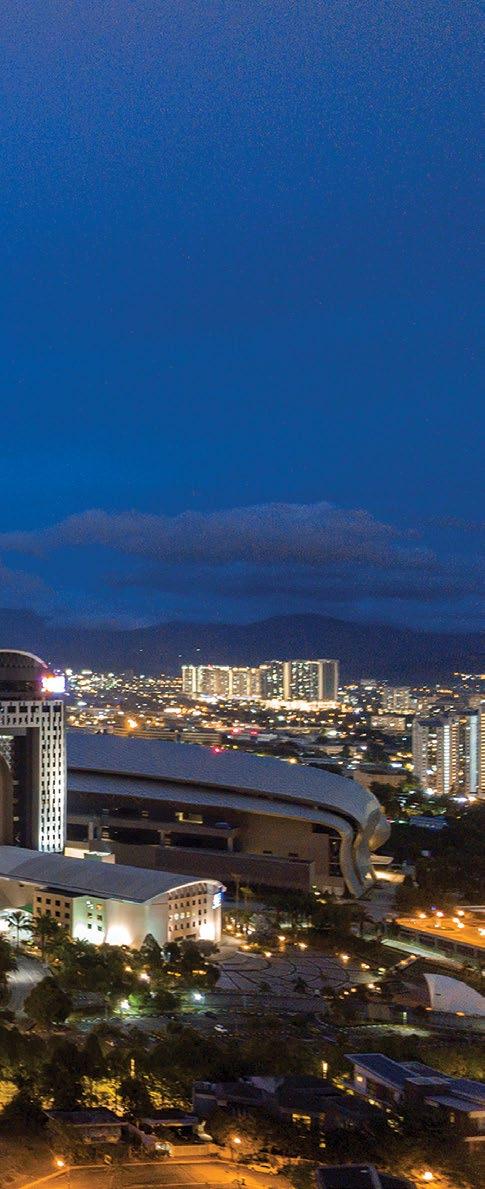
55
Arte MK Kuala Lumpur, Malaysia

56
Minhang Riverfront Regeneration, Shanghai, China

Another decrepit riverside area, this time in suburban Shanghai, Minhang Riverfront teemed with low-grade industrial warehouses, disused utilities, and overgrown paths. In just two years, SPARK transformed it into an energetic, mixed-use neighbourhood anchored by a playfully designed urban park. As the opening salvo of SPARK’s wider regeneration master plan for the district, the park facilitates improved pedestrian connections and recreational opportunities as well as a more sustainable living environment. From zoning and circulation to furniture and signage, SPARK’s multi-pronged, nature-inspired design exemplifies how civic regeneration need not shy away from bold, playful gestures.

57


58
Guangzhou Shipyard Master Plan
Taking cues from the shipbuilding history of the site, SPARK designed a central plaza featuring a multi-functional digital ‘flying boat’ that forms the image of the development and represents the evolving innovation of the 4k industry. Public space and its ability as a connector, meanwhile, were paramount to the project. The main pedestrian loop connects office workers, residents, and visitors from the central plaza to the facilities at the heritage slipway park, thematic ‘back lane’ food street, and riverfront dry-dock sports hall. The shipyard played a key role in Guangzhou’s industrial history and is primed to perform a new role in the Chinese government’s framework for the Guangzhou, Hong Kong, and Macau Greater Bay Area.

59
THE CAMBODIAN HOME, REIMAGINED
For years, the linkhouse has been a staple of Cambodia’s property sector. Now a boutique developer puts forward a great new vision of the beloved residential typology

Kambujaya Residences, a limited collection of 15 homes located at the eastern outskirts of Phnom Penh City, aimed to revitalise the ubiquitous Cambodian linkhouse typology with a new and modern twist. These homes, the first ever to be developed by Kambujaya, have been consciously designed to incorporate the pillars of the company’s key design philosophy: research-based, nature-integrated, and detail-oriented.
This new development is situated in Chbar Ampov, an up-and-coming district of Phnom Penh, that strikes the fine balance between infrastructural development and preservation of lush native greenery. This residential area boasts a wide array of modern amenities such as community parks, shopping plazas, retail outlets, and a wide selection
of palatable restaurants – all conveniently located within 5 minutes of the project.
The neighbourhood’s invaluable green infrastructure and quiet residential streets provided a perfect backdrop for families seeking solace and tranquillity from the hustle and bustle of the city center. To conserve some of the existing local greenery, the developer went through the tedious process of transplanting some of the site’s original mature mango trees, nursing them, and replanting them back on the site.
Influenced by the area’s lush natural surroundings, the development objective was to create and introduce a new style of living in Cambodia—one that would be symbiotic
60 ADVERTORIAL
ADVERTORIAL
with nature, unique to the local climate, and aesthetically striking. The developer knew the design had to differ and go beyond the usual standard of contemporary linkhouses and crafted a beautiful and functional space that ultimately resonated with its homeowners.
This boutique project was a result of close collaboration among the architects, engineers, and design consultants. Every aspect of the development process, from idea generation to construction oversight, was governed by rigorous analyses based on extensive experience and knowledge to ensure the validity of any rationales. Kambujaya’s hands-on approach, which is quite rare among Cambodian developers, ensured that each detail was constantly covered to maintain efficiency at every step of the way.
Kambujaya believed that constraints can often lead to some of the most innovative and unique design features. Although built within a linkhouse configuration, each Kambujaya home was designed to offer an uncompromising living experience in which residents can reap the benefits of a conventionally detached residential villa.
The three-storey, four-bedroom homes featured large open plan living spaces with ample natural lighting, ventilation, and landscaped greenery throughout. Each movement and
interaction within the home was choreographed to focus on the family-oriented central atrium that was intentionally designed to foster familial bond and a healthy living environment.

Much thought and care were put into the design process, evidenced by a string of niche little design details and features that were meant to be appreciated by the residents over time. The integration of shadow gaps as wall skirting and subtle embedment of handrails underneath a continuous single tile floor arrangement throughout the house were just some examples of the developer’s commitment to raising the bar for quality design and construction standard for Cambodia.
As an inaugural project, Kambujaya Residences perfectly captured Kambujaya’s strength in design and detailorientation as well as their unique approach to boutique development. It also showcased the developer’s ambition to provide better living and lifestyle solutions for the emerging Cambodian middle-class market. Their recognition on the influence that beautiful spaces have on people’s mental, physical and emotional wellbeing contributed to this oneof-a-kind project that put its residents’ experience at the forefront.
61
Kandal catching fire
BY JONATHAN EVANS
The home province of Cambodia’s former capital, Kandal remains an economic powerhouse as well as a rising destination for real estate investment


1 2 3
Borey Arey Ksat
Scheduled for completion in 2023, Borey Arey Ksat (BAK) will be the first integrated development in Leav Aem district to feature contemporary houses, villas, a gym, and pool. It also flaunts a clubhouse, mall, international university, and hospital and its surrounding area will eventually include condos, business quarters, a bank, and schools. The project is a short drive from Arey Ksat ferry port, linking the area to Phnom Penh’s Chroy Changvar peninsula.
The Cambodia–Korea Friendship Bridge, scheduled to commence building next year, will cut driving time and stimulate interest in Arey Ksat, as well as raising land prices.
BAK has already received recognitions at this year’s PropertyGuru Cambodia Property Awards.
Le Urban Eco Park
Upon opening in 2016, Le Urban Eco Park made waves in the field of ecologically minded construction in Cambodia with its innovative giga-project in Kandal Steung district. And it continues to win awards today, scooping the Best Industrial Development prize at this year’s PropertyGuru Cambodia Property Awards. The Singaporean-designed initiative takes the concept of integrated living to a new level by fusing residential, commercial, and business elements. The satellite town counts 120 residences and townhouses, 84 shops, a supermarket, and 15 hectares of industrial park. The community is designed as a self-sustaining exemplar of live-workplay, with energy efficiency, plentiful green space, and natural materials foregrounded in its construction. Eco-initiatives include solar-powered water heating, recycled wastewater, and advanced lighting controls. Onsite factories housing light industrial businesses are major employers in the area.
HOME Chamkar
This alfresco comfort-food restaurant in Sray Chrum Village lies in the Arey Ksat area. It wins great popularity for its impeccable location (notably among passing cyclists, for whom it provides ample bike racks). HOME Chamkar is perched right on the Mekong riverside and lies close to the ferry terminal that effectively connects Kandal province with Phnom Penh. Its relaxing setting is the key USP, and the venue maximises the rustic aura with a front-ofhouse boardwalk where diners soak up refreshing breezes and views of the enticing surrounds, which include many paths lined with mango trees and a lemongrass farm. Phnom Penh’s enervating city buzz may be only a few kilometres upriver, but it feels a world away.

62
Kandal province might not be a name readily familiar to those outside Cambodia. But it is crucial to the national economy. The majority of the largest city Takhmao’s residents commute to Phnom Penh, with road links facilitated by bridges recently constructed across the Mekong. Much of Kandal’s prosperity rests on its proximity to the capital, with agriculture, garment making, and artisan trades—silk weaving, wood carving, handicrafts—all prominent industries. It also houses the former capital of Oudong (see below), a significant city in Cambodian history. Offering quick and easy access to Phnom Penh, Kandal is reasserting its value to contemporary investors.
4 5 6
The River Mall/Center City Ta Khmao

It was predicted by none other than Khmer architect extraordinaire Vann Molyvann that Phnom Penh will continue to grow outwards towards Takhmao because of this area’s flood-resistant qualities. For proof of Molyvann’s prophecy, look no further than the Tonle Bassac riverfront and the imposing complex Center City, which opened in 2016. This integrated development, incorporating residential, commercial, and leisure space, is a joint venture between local developer Tang Kung Group and a Malaysian investor. It encompasses two 27-storey towers, 484 condominium units, a 68-unit commercial wing, two-storey shopping mall, health and fitness centre, swimming pools, and children’s playground. The River Mall, Takhmao’s de facto prime shopping destination, includes dozens of shops, restaurants, and cafés, complementing the “work-live-play” lifestyle.

The Fence Café
Recently, an increasing number of people in Phnom Penh have been turning to longdistance cycling outside the city, touring suburban areas for a change of scene while also getting much-needed fresh air and exercise away from the frenzied development that’s taken over the capital. In Takhmao, The Fence Café is a popular, expertly curated stop for day-trippers on the route of many biking trails. Egg coffee is the signature drink, and collectible, oldschool coffee and tea paraphernalia enliven the interiors. Painted shutters and doors, rattan rugs, and bamboo ceilings all add to the charmingly antiquated atmosphere. The café’s easygoing ambience has made it a go-to destination for pop-up markets, designers creating artwork, and even chess tournaments. A second outlet is located in central Phnom Penh.

Oudong
Cambodia’s capital and royal residence from 1618–1866 was this town, now strewn with relics remaining from the period, and set in Ponhea Lueu district. It’s a beautiful site to visit, with the stupas and temples shadowed by the rural location at the foot of Phnom Oudong (Oudong Mountain). The most enduring architecture dates from the reign of King Ang Duong (1840–60), who built many canals, terraces, bridges, and hand-carved pagodas. The Khmer Rouge gravely damaged Oudong and its religious structures in 1977, but it remains a captivating vision of faded grandeur. The 500-step climb up Phnom Oudong is rewarded by sublime views of the luxuriant countryside, extending as far as Phnom Penh’s Silver Pagoda and Royal Palace.
63
NEW DAWN FADES
Post-pandemic optimism around Southeast Asia has given way to concerns over inflation, currency depreciation, and rising interest rates. Yet 2023 should see most of the region finally surpass pre-pandemic market levels
 BY STEVE FINCH
BY STEVE FINCH


66
RISING DEMAND FOR PROPERTY IN BANGKOK IS FUELLED BY A SHARP DROP-OFF IN SUPPLY AS SELLERS WAIT TO LIST
This year was supposed to spell recovery for Southeast Asia’s previously booming real estate markets after the deep freeze of the pandemic. Yet the Ukraine conflict and associated inflationary pressures, along with a deepening Chinese property crisis, have stifled long-awaited rebounds to leave sentiment cautious in many parts of the region ahead of 2023.
In September, house prices in China’s largest cities fell for the 13th straight month, according to central government data. And although a GDP growth of 3.9% beat analysts’ estimates for the third quarter, the figure was still way down on Beijing’s annual target of 5.5% for 2022. A norm-defying third term for Chinese President Xi Jinping indicates a continued focus on security over the economy for Asia’s largest economy. But will the Year of the Rabbit prove more prosperous than that of the Tiger?
Nearby Southeast Asia has remained heavily exposed to China’s real estate regression, producing threats and opportunities which have tied into a challenging global economic climate.
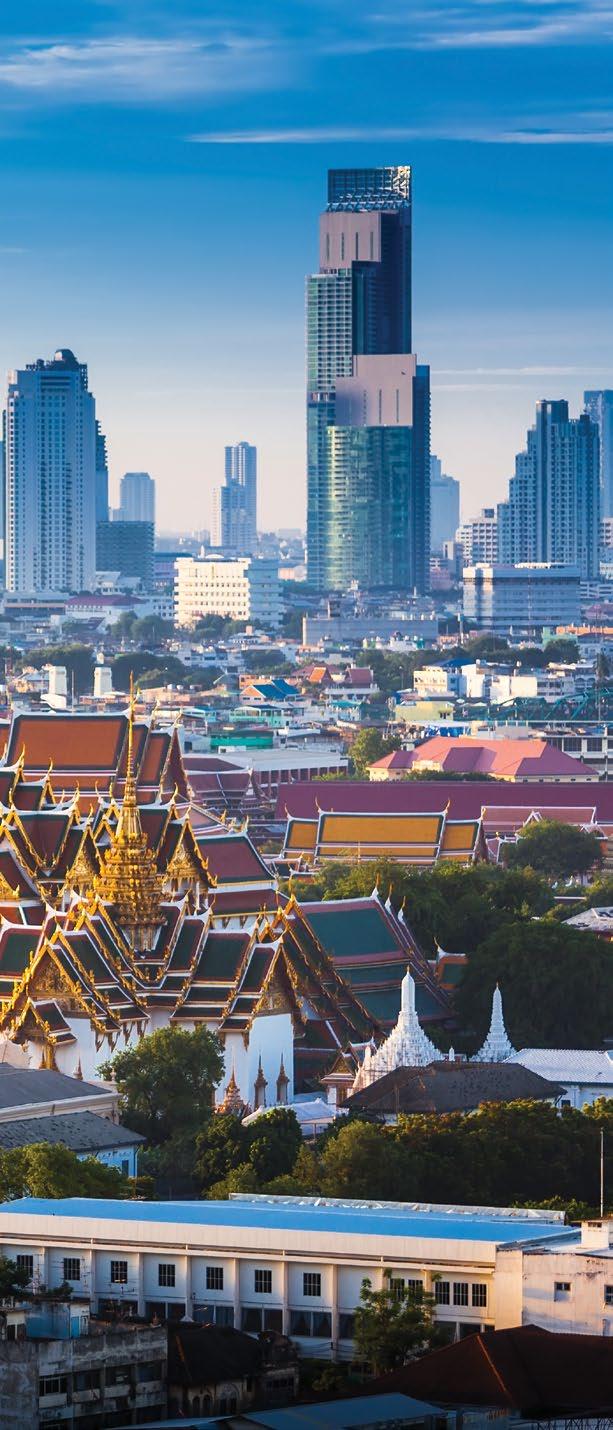
With Chinese property speculators no longer guaranteed returns at home, growing numbers have sought refuge overseas with the ASEAN region a prime destination.
Australia took the number-one spot from Thailand this year in terms of most popular destinations for Chinese buyers, but ASEAN nations remain hugely sought-after.
A key associated problem: city-wide pandemic lockdowns in China have further eroded confidence—and spending—in China’s domestic economy, spurring citizens to seek returns overseas while remaining trapped from doing so in the case of cities including Shanghai earlier this year.
The big question regarding Chinese demand for Southeast Asian property is when will China fully reopen. Some observers believe that it won’t be until the third quarter of 2023. But expect mounting enquiries from speculators in the period leading up to that time.
67
For many developers, realtors, and property sellers, this spells good news amid recent negative global economic pressures.

In Thailand, the prospect of growing numbers of Chinese property investors has come amid a wider debate about foreign land ownership following decades of restrictions. A new regulation introduced by the Thai government in September means foreigners can now buy up to one rai, or 0.16 hectares, if they invest at least 40 million baht (USD1.1 million) in Thai property, securities, or funds over at least three years, a move likely to benefit Chinese buyers as the most dominant overseas contingent. A potential spanner in the works is the fact the opposition Pheu Thai Party, which leads polling ahead of elections due in Thailand next year, opposes the legal change.
Signs of a recovery in Thailand’s residential real estate sector remain similarly confused. Demand has picked up since the first quarter, says Bangkok-based DDProperty. But it is fueled by a sharp drop-off in supply as sellers wait to list and developers stall opening sales as prices continue to slide.
Interest rates could dampen real estate sentiment heading into 2023 as Thailand seeks to control inflation which reached close to 8% in August, its highest rate in 14 years. At the end of September, the Thai central bank raised the base rate for the second straight quarterly meeting by 0.25 points to 1% while leaving open the possibility of further hikes.
“The committee is ready to adjust the size and timing of policy normalisation should the growth and inflation outlook
68
THE PHILIPPINES REAL ESTATE MARKET HAS RANKED AMONG THE MOST BUOYANT IN THE REGION IN 2022 WITH ITS RECOVERY FUELLED BY SOARING DEMAND
shift,” says Piti Disyatat, secretary of the central bank’s Monetary Policy Committee.
Rising base rates have come as an unexpected dampener on real estate markets across the region in 2022, a response designed to contain inflation fueled by the Ukraine conflict and prop up struggling local currencies amid a resurgent US dollar.
Each of ASEAN’s 10 member states has raised rates this year in a bid to tackle inflationary pressure with the Philippines being the most aggressive, increasing the benchmark rate from 2% in May to 4.25% by September. The Philippines real estate market has ranked among the most buoyant in the region in 2022 with CBRE in mid-year confirming a sustained post-pandemic recovery fueled by soaring demand. The jury

is still out on whether rising rates would put a significant brake on the buoyant Manila market going into 2023.
In Malaysia, as in many countries in the region, inflation peaked in August reaching 4.7%. Knock-on price rises on building materials remain the key factor holding back a post-pandemic recovery in Malaysia’s real estate sector, said Zulhkiple Bakar, managing director and principal owner of Perunding ZAB, an engineering and structural design company based in Kuala Lumpur.
“Some developers are down to single-digit profits,” sa says Bakar, citing rising costs for eroding bottom lines in the industry. “The fact that there are still several new launches being held back shows the property market is still recovering.”
69
Like Thailand and Cambodia, Malaysia faces a general election next year, and associated political risks and uncertainty, adds Bakar.
In Vietnam, domestic politics and knock-on effects from the Chinese real estate crisis have contributed to rising uncertainty in a real estate sector accustomed to higherthan-average rates which—as with the rest of the region— have ticked upwards this year.
In October, the detention of a high-profile real estate figure, represented the latest move in an expanding anticorruption drive impacting a growing portfolio of real estate developments, particularly in the main economic hub Ho Chi Minh City.

Some foreign investors in Vietnam’s property sector have had to exit deals—despite months of work and negotiations— after discovering local partners have been implicated in anti-
corruption investigations.
“For companies listed overseas this is an automatic red flag,” says Fred Burke, senior advisor of US law firm Baker McKenzie in Ho Chi Minh City.
Hanoi has attempted to tackle bad debt in the real estate sector in moves that echo restrictions imposed in China last year as large developers including Evergrande Group began to face defaults on debt.
In late October, the National Assembly’s Economic Committee signaled further efforts to clean up the property sector by warning some real estate companies were still suffering from “unhealthy financial positions” with high levels of debt which could cause difficulties in bond payments. Misuse of bond capital was causing a loss of trust among investors it says in a statement. “The government is suddenly realising they do have to tighten things up,” says Burke.
70
VIETNAM HAS BEEN ROCKED BY A STRING OF CORRUPTION SCANDALS THAT HAVE IMPLICATED SOME KEY LOCAL PLAYERS IN THE REAL ESTATE INDUSTRY
Amid such uncertainty, Vietnam is set to record the highest GDP growth in East Asia this year at 7.2%, according to the World Bank. Avoiding a sharp slide in economic growth, as China witnessed in 2022, may depend on whether Hanoi can stem similar property-related pitfalls next year.

Cambodia condo market suffers
Rents for condominiums, in recent years a key growth sector for Cambodia’s emerging property sector, recorded a downturn in the third quarter with China’s real estate problems and wider growth economic slowdown cited as a key brake on investment by CBRE’s Phnom Penh office. Overall market signals were described as mixed by CBRE following a slight improvement in occupancy rates at offices while the hotel and tourism property segment recorded significant growth.
Cambodia was among the first countries in the region to fully open after the pandemic with tourism rebounding as a key economic driver for the local economy. However, the return of international tourists to famous sites including Angkor Wat has coincided with a property crisis in China, which the Cambodian economy has become increasingly reliant upon in recent years. In Phnom Penh, the retail property market has been notably buoyant with the opening of three new malls in the capital: K Mall, 60M Community Mall, and Chip Mong 271 Mega Mall. Aeon Mall has announced plans to open a third venue in the Cambodian capital by the end of the year as the country continued a recent trend of embracing large shopping spaces.
Indonesia sees pre-sales growth stall amid rising rates
Pre-sales of new residential units were expected to slow during the remainder of 2022 resulting in overall annual
71

72
SINGAPORE REMAINS LOCKED IN A NATIONAL DEBATE ABOUT HOW TO TACKLE SPIRALLING HOUSING COSTS AMID ONE OF THE HIGHEST STANDARDS OF LIVING IN THE WORLD
growth of between just zero and 5% in 2022, a significant slowdown compared to 35% recorded the previous year, says Fitch Ratings. Although the ratings agency cited the Eid Islamic holiday as a key dampener on pre-sales during the second quarter, the final weeks of the year were forecast to see an enduring stagnation in pre-sales which drive developer revenues and profits—and fund future projects. Fitch said that Indonesian interest rate hikes were partly the cause for the weakening performance of the sector. In late October, the Indonesian central bank announced a 50-point rise in the base rate to 4.75%, in turn spurring the highest mortgage rates since the pandemic in a bid to bolster the rupiah. Fitch said that about half of all home presales in Indonesia are funded by mortgages, while inflation which hit a seven-year high of nearly 6% in September has caused weakened demand in the property sector. At the end of September, the government ended a sales tax rebate for finished homes which was also expected to dampen demand for new home purchases in the fourth quarter.
Singapore rents soar after new property curbs
Singapore recorded a jump in rents for apartments in September compared to a year earlier after it tightened home loan limits in a bid to curb runaway prices in the market. The measures, designed to increase affordability for home buyers, have resulted in soaring rents. The problem is not expected to improve until the city-state completes 17,000 new private houses aimed at alleviating supply issues, a rise from the 14,000 such units completed in 2022. Rents have increased for 21 consecutive months in Singapore despite strict lockdowns last year amid the global pandemic. Singapore remains locked in a national debate about how best to tackle spiraling housing costs amid one of the highest standards of living in the world. New measures to tackle the high prices and supply problems include a new restriction whereby private homeowners must now wait 15 months before they can move to resold public housing flats, the most affordable units on the local market.

73
Some observers believe that China won’t fully reopen until the third quarter of 2023. But they expect mounting enquiries from speculators in the period leading up to that time

PROPERTY FOR THE PEOPLE
BY LIAM ARAN BARNES
Like many images captured during the pandemic, it could easily have been a scene from a Hollywood apocalypse movie. In the heart of Bangkok, military police clad in fatigues, face masks, and full-length visors guarded the shuttered corrugated metal entrance to a construction workers’ camp. Above them, the sign read: “No entry or exit until further notice.”
The camp was one of a wave of sites sealed off by Thai authorities in June 2021 to curb the spread of Covid-19. Overnight, some 81,000 workers were imprisoned, stranded from the outside world. In 2019, there were more than three million registered migrant workers in the country, mostly from neighbouring Laos, Cambodia, and Myanmar. While as many as 500,000 returned to their home countries at the start of the pandemic, those who remained did not have the right to healthcare or other forms of social safety. Many were—and still are—completely undocumented.
As the initial 30-day quarantine progressed, local media reported that government promises to provide food, water, and basic supplies; cover 50% of salaries; and set up testing sites had fallen short. Workers were left to fend for themselves in crowded and unhygienic close quarters, reliant on charities and donations to survive.

With the pandemic putting a spotlight on corporate practice like never before, players in the real estate industry around Asia are getting serious about investing in ESG
Thai netizens were quick to criticise the government. But the developers and construction companies behind the glitzy high-rises to which workers dedicated their waking hours were also in the firing line for their perceived inactivity. It was a rude awakening for a sector that has invested heavily in marketing corporate social responsibility (CSR) initiatives— and latterly environmental, social, and governance (ESG) schemes.
“I think for the general public the pandemic demonstrated the importance of sustainability and a realisation that the way we have been doing business so far, in terms of profit before everything else, simply cannot continue,” says James Eckford, technical advisor at Baan Dek Foundation, which works with construction companies and developers to help
improve worker camp environments in Thailand. “It’s literally unsustainable.”
The term ESG was first popularly used in a 2004 report titled “Who Cares Wins”, a joint initiative of financial institutions at the invitation of the United Nations. Almost two decades later, the ESG movement has grown from a corporate social responsibility initiative into a global phenomenon representing more than USD30 trillion in assets under management. In 2019 alone, capital totalling USD17.67 billion flowed into ESG-linked products, an almost 525% increase from 2015, according to US financial services firm Morningstar.

76
(ESG) SCHEMES
Its rapid growth builds on the Socially Responsible Investment (SRI) movement that has been around much longer. But unlike SRI, which is based on ethical and moral criteria and uses mostly negative screens, such as not investing in alcohol, tobacco, or firearms, ESG investing assumes that these factors have financial relevance. It is now, quite literally, big business. But what explains the rise of ESG and what does it mean for the future of real estate?
“There are a few factors leading to this phenomenon,” explains David Fogarty, head of sustainability & ESG consulting services for Southeast Asia at CBRE. “The policy drivers, mandates, and financial incentives from the government and investors motivate and catalyse the implementation of ESG strategies.

“We have also observed that pioneering listed companies are willing to set ESG targets and monitor the implementation through data support. The main benefits are supporting their CSR strategy, corporate branding, and financial incentives such as ESG loans and bonds.”
For many, ESG suggests environmental issues such as climate change and resource scarcity. While these are important elements, the term covers much more, including social issues, labour practices, talent management, product safety, or data security, as well as governance matters like diversity, executive pay, tax management, and business ethics.
Since launching more than a decade ago, Baan Dek Foundation has been revolutionising the way social issues are addressed in Thailand’s real estate sector. Crucially it has worked with innovative construction firms, developers, and humanitarian aid agencies including MQDC, Syntec Construction, and UNICEF Thailand to develop solutions and practical tools to improve communities’ conditions and access to services.
“The social aspect is huge and opaque, and many companies see it as a free-for-all or a pick-and-mix of topics that they think are easy to tackle,” Eckford says. “Good practices emerging are supplier codes of conduct, but the challenge is controlling this
77
A COMMITMENT TO GREEN CONSTRUCTION IS A CENTRAL PLANK OF DEVELOPERS’ ENVIRONMENTAL, SOCIAL, AND GOVERNANCE
and ensuring that there is no social washing happening. This is where civil society and human rights experts can support, not only to ensure that risks are properly identified and vulnerable stakeholders are engaged, but that appropriate mechanisms are in place to ensure accountability.”
Baan Dek Foundation’s experience and the revelations of the pandemic led to the creation in 2021 of the Building Social Impact (BSI) Initiative. The private-sectordriven sustainable social impact initiative for migrant workers and their families features the BSI Framework for Action, a set of 12 actionable recommendations for construction companies. These recommendations aim to improve the living conditions in construction site camps, as well as workers and children’s access to essential public services, such as healthcare, education, and social services. It also includes a training toolkit to guide companies from the operational to the management level.
In less than a year, five major construction companies have already signed on with two large property developers poised to join—in addition to almost 30 smaller-scale firms in Chiang Mai. One of the BSI partners, Magnolia Quality Development (MQDC), is already renowned for its sustainability performance, and recently unveiled the dedicated knowledge-sharing platform Research and Innovation for Sustainability Centre. Other Thai real estate companies with a history of undertaking positive social sustainability initiatives focused on worker and family wellbeing include Areeya
Property, SC Asset, and Pruksa, according to Baan Dek Foundation’s research.
Elsewhere in Asia, Malaysian developer Matrix Concepts Holdings Berhad was recently recognised at the PropertyGuru Asia Property Awards for its ESG efforts. In its 2021 sustainability report, Sustainability Committee chairman Dato’ Haji Mohamad Haslah Bin Mohamad Amin said: “Covid-19 is an excellent example of how poor ESG controls and oversight ultimately resulted in a global pandemic. If anything, the virus outbreak serves as a stark reminder of even more severe consequences should the world continue to relegate sustainability to an afterthought.”
Far from an afterthought, Matrix has placed ESG at the heart of its business in recent years. Major achievements to date include the adoption of the UN’s Sustainable Development Goals, formalising whistleblowing and health and safety policies, as well as the introduction of group-wide sustainability, anti-bribery and corruption policies. With its dedicated committee directly overseen by the board and annual whitepapers, the developer is also trailblazing the governance aspect of ESG in the country’s real estate industry.
“A company with good ESG strategy shall take all the material ESG issues that are important to internal and external stakeholders into account, not only the ‘E’,” says Jackie Cheung, associate director for ESG at Knight Frank Hong Kong. “Governance is the foundation and cornerstone of ESG, which investigates boardroom practice and
78
The pandemic demonstrated the importance of sustainability and a realisation that the way we have been
doing business so far, in terms of profit before everything else, simply cannot continue. It’s literally unsustainable
TAKING CLIMATE CHANGE TO TASK
The Task Force on Climate-Related Financial Disclosures (TCFD) is one of the fast-growing and well-recognised disclosure frameworks that emphasise and quantify governance as a fundamental action.

Created by the Financial Stability Board in 2015, the TCFD was in place to “develop recommendations on the types of information that companies should disclose to support investors, lenders, and insurance underwriters in appropriately assessing and pricing a specific set of risks—risks related to climate change.” It is currently supported by more
than 3,500 individual businesses globally and from all industries. In APAC alone, 13 stock exchanges adopt the TCFD, with the earliest adopter being the Singapore Stock Exchange in June 2017.
According to Knight Frank’s Cheung, “the adoption of TCFD is a promising sign that more listed companies are being held accountable for their actions since they have a significant impact on our environment. By being liable, they can have more positive influences on society.” Many countries have also set targets for listed companies to disclose TCFD by 2025 or earlier.
79
THE MISTREATMENT OF CONSTRUCTION WORKERS DURING THE PANDEMIC HAS FORCED DEVELOPERS AROUND ASIA TO ADDRESS CONDITIONS ON PROJECT SITES
behaviour. Governance has the most significant contribution to a firm’s performance out of multiple ESG benchmarks.”
Guocoland is another example of a real estate firm taking major steps to ensure governance is at the heart of its ESG initiatives. Over the years, it has demonstrated its adherence through various accolades. These include the Building and Construction Authority Green Mark Champion award, recognising developers with a strong commitment towards corporate and social responsibility, as well as developing Green Mark buildings at the gold level or higher. The Singapore-based developer is also aligned with comparable reporting frameworks, such as the Task Force on ClimateRelated Financial Disclosures and Global Reporting Initiative standards.

Established industry players such as Guocoland and Matrix may already be embracing internationally recognised standards for ESG, but many are still too reliant on internal reporting, according to Trey Archer, business development director, Asia, for GRESB, which provides validated ESG performance data to financial markets.
“This is a huge mistake. Yes, it’s good to have these documents, but there is no standardisation from one
company to the next,” he says. “They only usually highlight the good areas where companies excel, and there’s no benchmarking. Therefore, GRESB is a powerful tool. It’s a standardised report that all companies follow, revealing both the good and bad, so they can benchmark against industry peers.”
Still, the tide appears to be gradually turning, especially in the aftermath of the pandemic. Developers and construction firms in the region are increasingly adhering to internationally recognised frameworks. Investors, meanwhile, are gaining a greater understanding of supply chains and ever-improving access to ESG assessment criteria and reporting. Yet the next—and arguably most significant—step in embedding ESG into the real estate industry needs to come from the public sector.
“Governments cannot be afraid of appearing as though they are creating more red tape for companies,” Eckford says. “Voluntary measures have long been shown to be ineffective.
“Hard regulation is an absolute must. But this must be combined with support and collaboration as well as punitive measures for lack of action.”
80
IN THAILAND, MAGNOLIA QUALITY DEVELOPMENT CORPORATION (MQDC) IS AMONG THE DEVELOPERS TO HAVE SIGNED ON TO A SOCIAL IMPACT INITIATIVE FOR MIGRANT WORKERS AND THEIR FAMILIES
HOW GRESB WORKS
As investors attempt to monitor and evaluate assetlevel ESG performance, the use of benchmarking tools such as the Global Real Estate Sustainability Benchmark (GRESB) will become increasingly prominent.

GRESB gathers and compares data on the ESG performance of real estate and infrastructure entities. Entities are given a GRESB score that measures their ESG performance in absolute terms, along with a GRESB Rating that ranks them among their peers. Participants also receive a summary analysis of performance, showing strengths and weaknesses across categories such as leadership, policies, risk management, health and safety, greenhouse gas emissions, building certifications, and stakeholder engagement.
“Europe was really the first to start adopting ESG aggressively, and now Asia is finally starting to wake up,” says GRESB’s Archer. “The biggest problem for developing markets is that they place profitability over sustainability since cash flow is more restricted in these markets.
“However, once they start to realise that ESG can help connect with investors and increase bottom lines, then they sign up.”
81
DEVELOPERS AROUND THE REGION ARE MAKING GOOD ON THEIR SUSTAINABILITY COMMITMENTS BY INCORPORATING GREEN ELEMENTS IN NEW PROJECTS
GROWING OLD GRACEFULLY

82
With several countries in Southeast Asia verging on becoming aged societies, catering to the requirements of mature investors will be a key challenge for developers
 BY AL GERARD DE LA CRUZ
BY AL GERARD DE LA CRUZ
83
With the death of Queen Elizabeth II, King Charles III, one of the world’s most visible baby boomers, inherited a USD25-billion real estate portfolio. Down another generation is Elon Musk, the world’s richest man, who had owned a chunk of California housing stock with an estimated worth of nearly USD130 million.
But the Tesla CEO and Britain’s new monarch are unrepresentative of their demographic cohorts’ property journeys, not least in Southeast Asia. While boomers and Generation X fared better in wealth accumulation than millennials and Generation Z, these elder generations lived through unique challenges spanning everything from the Vietnam War to the AIDS pandemic. Now retired or in the later stages of their careers, boomers and Gen X’ers live out family dynamics and medical experiences specific to their timelines.
Developers and governments are primed for a sense of urgency around these generations as several countries in Southeast Asia verge on becoming aged societies. Thirty-three percent of the Thailand population would be aged 60 and over by 2040; in Malaysia, that proportion would be 15% by 2030. Citizens aged 65 and above now make up 18.4% of Singapore’s population.
Born from 1946 to 1964, boomers benefited from the prosperous economic growth cycle after World War II. Generation X, born in the succeeding years until 1980, actually saw the highest wealth increase among all cohorts during the pandemic. Its oldest members will turn 60 by 2025.
“If there’s one commonality among baby boomers and Generation X, I would say that the health costs are going to be higher for them,” says Dr. Nai Jia Lee, head of real estate intelligence at the leading proptech

84
AGEING IN PLACE IS A HEALTHY CONCEPT, BUT THAT MEANS HAVING THE NECESSARY SERVICES AND MEDICAL FACILITIES TO SUPPORT THIS GOAL

85
WITH ITS FRIENDLY CLIMATE AND PROXIMITY TO BANGKOK, HUA HIN HAS LONG BEEN A FAVOURED DESTINATION IN THAILAND FOR RETIREES
company PropertyGuru. “If the state has to provide a certain level of healthcare, it would be a drain on their resources.”
From Apple’s Steve Jobs to Tencent Holdings’ Ma Huateng, boomers and Gen X’ers came of age during—and even helped bring about—the advent of personal computers and other disruptive technologies, creating enormous wealth for entire generations.
The current landscape reflects how the economies of Southeast Asia have been good for wealth accumulation. Southeast Asia’s high-net-worth individuals (HNWI), defined as those with a net worth of over USD1 million, are expected to almost triple by the middle of the decade from 2016, according to the Wealth Report by the consultancy Knight Frank. The number of ultra-high-net-worth individuals (UHNWI), those worth USD30 million or more, hit 4,206 in 2021, up from 3,874 the year before, in Singapore alone.
“Wealth preservation will continue to factor highly for buyers in each generation,” says Christine Li, head of research at Knight Frank Asia-Pacific. “And often, properties with strong wealth preservation qualities are well located in areas that
cater to what buyers from each demographic cohort are looking for in a home.”
The retirement community model that has worked well for boomers in western nations still has not gone mainstream in Southeast Asia, despite the best efforts of developers.

“Culturally, strong familial ties and expectations of filial piety mean the concept of retirement communities remains a niche sector in the region currently, although with scope to develop,” adds Li.
The idea of retirement communities could still gain traction with declining marriages and births in the region. Retirement homes are likely to appeal to Generation X, a cohort nicknamed “baby busters” because of the decline in birth rates following the baby boom. Such homes may not be a hard sell to the cohort sometimes dubbed the “Latchkey Generation” for their precocious levels of independence as children.
As adults, Gen X’ers tend to delay or completely swear off marriages: a pattern being picked up by millennials.
86
BALI IS ANOTHER LOCATION IN SOUTHEAST ASIA THAT HOLDS PLENTY OF APPEAL FOR SENIOR PROPERTY INVESTORS
GEN X vs GEN Y
While Generation X and Generation Y share many common characteristics, their housing arrangements could not be any more different.
“Gen X still has that very strong home ownership aspiration,” says Dr. Nai Jia Lee, head of real estate intelligence at PropertyGuru Group. “But when it comes to Gen Y or millennials, if trends continue, they actually may go into something like co-living and rentals.”
Gen X’ers have a strong affinity for comfort and luxury whereas millennials’ focus is on sustainability because of an awareness of climate change. Also, in Singapore and Thailand, up to 66% of millennials are most concerned about building their savings for emergencies or buying a future home, according to the latest property sentiment index by PropertyGuru.

“Interestingly, at this point, what we see is that whenever people have a sudden spike in wealth, the first thing they buy is real estate and luxury items,” says Lee. “But more and more of them, especially the younger generations, target things of value, and sustainability, of course, is one of them.”
Younger generations who come into their fortune are also likelier to put their inheritance in higher-risk products like cryptocurrencies than cohorts before them. “The way they look at real estate may be different,” says Lee.
87
“But the problem is many property seekers do not want to go into something that has a stigma,” says Lee. “Developers realise that when they incorporate some of the elder-friendly types of elements into housing, people may feel that this is going to be just a development for old people. So, they will shun that development.”
To many Southeast Asian seniors and retirees, the concept of ageing in place presents a better alternative to retirement resorts built far from their support systems. In-place ageing simply means growing old in a location of one’s preference and remaining part of that community for as long as possible, skirting expensive institutional care in the process.
“Ageing in place works and is more aligned with the Asian context,” Lee says.
“It is a healthy concept,” concurs Victoria Garrett, head of residential for Knight Frank Asia-Pacific, “but that means having the necessary services and medical facilities to support this goal. Property developers should remain cognisant of this trend and focus on intergenerational models to tap opportunities that could emerge from such demographic shifts.”
For ageing in place to be effective, governments need to rationalise their efforts around the most vulnerable segments of a greying society. At their best, the elderly can still be autonomous and sprightly, suitable candidates for active living communities—or incapacitated at their worst, shoos-in for residential care.
“The government has to create a financial ecosystem to help them, and that must be in place so that they don’t overstrain the healthcare sector,” says Lee. “Otherwise, if everyone doesn’t have that kind of social support, then you’ll make things very expensive and go out of hand.”
Singapore has given its neighbours a glimpse of what can be done with the prudent use of state resources. The Housing & Development Board (HDB) last year launched its first assisted living public flats, featuring 24-hour emergency monitoring and accessibility features, for buyers aged 65 and above who want to live on their own. HDB also offers two-room flexi flats with lease terms as short as 15 years, in keeping with the property seekers’ reduced life expectancy.

88
MULBERRY GROVE SUKHUMVIT IN BANGKOK HAS WIDE CORRIDORS AND ENTRANCES, GENTLY SLOPING RAMPS, RAILINGS FOR YOUNG AND OLD, AND COLOUR-CODED AREAS, AMONG OTHER UNIVERSAL DESIGN FEATURES
WHERE THE EMPTY NESTERS ARE
Retirement communities, villages, and resorts tend to thrive in countries with enough land resources. Conversely, land scarcity and high land costs prevent such developments from proliferating in places like Singapore.
“In countries other than Singapore, it’s possible to have retirement villages because of the lower land prices and the accessibility to certain resources,” says Dr. Nai Jia Lee, head of real estate intelligence at PropertyGuru Group.

In Indonesia, for example, some developers have tracts of land near attractive locations with mountains, forests, and natural habitats conducive to rest and rehabilitation. Thailand, on the other hand, banks in its mature medical tourism industry to make healthcare accessible for members of a retirement community.
“They may do very, very well and much better than Singapore, but when it comes to how we use technology or universal design, Singapore would be leading as the need for those is becoming more and more urgent as we speak.”
Several countries across Southeast Asia are making a case for seniors besides their own. “Malaysia and the Philippines are actively courting opportunities and positioning themselves as an ideal place for international retirees,” says Christine Li, head of research at Knight Frank Asia-Pacific.
89
PARC CLEMATIS OFFERS A WIDE ARRAY OF UNIT TYPES FOR SINGAPORE PROPERTY SEEKERS, RANGING FROM YOUNG FAMILIES TO MULTI-GENERATIONAL HOUSEHOLDS
The Singaporean government has also started such subsidies as the Silver Housing Bonus, supplementing the retirement incomes of elderly households when they rightsize their flats. Homeowners in their twilight years can also access the equity in their properties via reverse mortgages.
Inclusivity is as important as affordability; the property must play to the wider community. As younger generations forge housing pathways, experts advise empty nesters to rightsize in locations that hold the best value.

“If they are having the home for owner-occupation, they should be in places where they’re close to their kids and friends, where their social compact is, and where they have easy access to healthcare and different amenities,” says Lee. “This is very key because movement over time will be constrained.”
At times, the pull of nostalgia draws Generation X from large built spaces to neighbourhoods that hold a lot of memories for them. “They want to be where they were when they grew up,” says Lee. “That’s why we see a lot of gentrification happening.”
Not all Southeast Asian countries share Singapore’s foresight in protecting vulnerable age groups. Where Singaporeans reap the benefits of the central provident fund later in life, many boomers and Gen X’ers elsewhere endure insufficient retirement plans, if at all.
Boomers can generally depend on the financial support of their children later in life. The reverse is also true for the many Gen X’ers who decide to remain single. “If the proportion of singles is going to be larger, then that would be an issue because they would not be supported by their kids,”
90
WITH ITS MANY SENIOR-FRIENDLY FACILITIES AND GREEN SPACES, THE ASPEN TREE AT THE FORESTIAS ADAPTS AN INTERNATIONAL MODEL OF HOLISTIC LIFETIME CARE FOR THE 50-AND-OVER SET IN THAILAND
says Lee. “There must be a financing ecosystem to support them.”
But retirement itself is a concept in progress. Today, Generation X and succeeding cohorts are finding their work lives being extended. Since July, the retirement age in Singapore has been raised to 63, gradually rising to 65 by 2030.
It stands to reason that the housing solutions shunned today may well be tomorrow’s norms. “All these things don’t work out because of the social context that the family is fundamental,” says Lee. “Now that fundamental may change; it weakens every generation. It’s strong with the baby boomers, slightly weaker with Gen X, and even weaker with Gen Y as they transcend boundaries. The time after Gen Z is when things probably change.”
Although the increase in property prices and current tax laws may be prohibitive for first-time buyers, younger cohorts can tap the wealth accumulated by boomers and Generation X, plus the outstanding GDP growth generated across Southeast Asia in general.
“These next generations will be keen to manage and continually grow these inheritances, and property purchases will reflect such goals,” says Garrett. “Properties in core locations will be preferred and with the younger cohorts’ more global view, these will also span across the globe.”

91
THE JUDGES
Sorn Seap
Chairperson of the Awards in Cambodia and Executive Vice-President of the Cambodian Valuers and Estate Agents Association
Jenny Chea Sok You
Architect and Managing Director, CMED Construction Jovany Antonio
Managing Director, DA&G Asset Management Kinkesa Kim
Associate Director, CBRE Cambodia, Research & Consulting Services
Lim Veasna
Partner & Attorney-at-Law, Commercial Arbitrator and Mark Agent, Vinaya Law Firm
Michael Freeman
Operations Leader – Asia, Cova Group
Michel Cassagnes
Managing Director, Archetype Cambodia Simon Griffiths
Managing Director, The Mall Company Dr. Simon Vancliff
CEO, WB Sport Village Co., Ltd. Thida Ann
Managing Director, ProPnex Cambodia
The 7th Annual PropertyGuru Cambodia Property Awards celebrated the leading lights of real estate at the Sofitel Phnom Penh Phokeethra on 26 August 2022.
Prince Real Estate Group won the top award of the year, Best Developer, as well as the title for Best Mixed Use Developer. Kambujaya Development Co., Ltd, named Best Breakthrough Developer, won several awards for its project Kambujaya Residences. Angkor Palace Development Co., Ltd., winner of the Best Boutique Developer title, gained accolades for multiple projects.
The Best Industrial Developer title went to C.I.A.C Investment Limited while Orkide Villa 3 Co., Ltd was named Best Lifestyle Developer. The sought-after Best Condo Development (Cambodia) award was awarded to Vue Aston by The Peninsula Capital Co., Ltd.
Charles Vann, executive vice-president of Canadia Group (whose subsidiaries include the Overseas Cambodian Investment Corporation) and director of Cambodia Airport Investment Co. Ltd., accepted the Cambodia Real Estate Personality of the Year award.
For the full list of winners, please visit asiapropertyawards.com/en/award/cambodia
SPONSORS AND PARTNERS
Gold sponsor Panasonic Cambodia
Gold sponsor CBRE Cambodia
Silver sponsor Jotun (Cambodia) Ltd.
Official channel partner History
Official magazine Property Report by PropertyGuru
Official PR partner Two Way PR
Media partners
Construction & Property and Southeast Asia Globe
Official ESG partner Baan Dek Foundation
Supporting association EuroCham Cambodia
Official supervisor HLB
92








93
CANADIA GROUP’S CHARLES VANN SHARES A LAUGH WITH PROPERTYGURU GROUP’S JULES KAY
ONE OF SEVERAL WINNING MOMENTS FOR KAMBUJAYA DEVELOPMENT CO., LTD
A SPEECH BY BEST LIFESTYLE DEVELOPER WINNER ORKIDE VILLA 3 CO., LTD
INVESTMENT
THE YEAR’S BEST
DEVELOPER
THE AWARD-WINNING TEAM OF ANGKOR PALACE DEVELOPMENT CO., LTD. DEVELOPER
C.I.A.C
LIMITED,
INDUSTRIAL
PRINCE REAL ESTATE GROUP IS HAILED THE YEAR’S BEST
THE PENINSULA CAPITAL CO., LTD. ACCEPTS A WIN FOR VUE ASTON A TRIUMPHANT MOMENT FOR KY DEVELOPMENT
On 7 October 2022, the PropertyGuru Philippines Property Awards celebrated the programme’s milestone 10th edition.
Robinsons Land was named Best Developer in one of nine winning titles for the company. Cebu Landmasters, Inc. also garnered nine wins, including the titles of Best Developer (Visayas) and Best Developer (Mindanao). SM Development Corporation (SMDC) accumulated various wins for its projects, including the mixed-use site Gold City.
Aboitiz InfraCapital Economic Estates was hailed Best Industrial Developer while Torre Lorenzo Development Corporation was honoured as Best Boutique Developer.
Megaworld Corporation won the Best Hospitality Developer and Best Mixed Use Developer titles, with subsidiary GlobalEstate Resorts, Inc. (GERI) winning Best Lifestyle Developer.
PHINMA Maayo San Jose scored the coveted Best Housing Development (Philippines) title as The Seasons Residences earned the Best Condo Development (Philippines) award.
Lourdes Josephine Gotianun Yap, president and CEO of Filinvest Development Corporation, became the first woman to receive the Philippines Real Estate Personality of the Year award.
For the full list of winners, please visit asiapropertyawards.com/en/award/philippines
THE JUDGES
Cyndy Tan Jarabata
Chairperson of the Awards in the Philippines and President, TAJARA Leisure & Hospitality Group Inc. Carlo Cordaro
President and CEO, Atelier A Jaime A. Cura, Ph.D. Vice-Chairman, The RGV Group of Companies Jean Jacquelyn Nathania A. de Castro CEO, ESCA Incorporated Kathleen P. Obcemea Principal Interior Designer, KPO Beyond Designs Co. Luis Enrique T. Mangosing CEO, Metro Development Managers, Inc. (MDMI) Michelle Barretto
Founder and CEO, Vitamin B, Inc. Philip Mareschal
Head of Property & Asset Management, JLL Philippines Raymond Rufino CEO, NEO Richard Raymundo BSc (Bus Econ), MRICS Managing Director, Colliers Philippines
SPONSORS AND PARTNERS
Platinum sponsor Kohler
Gold sponsor Boysen Paints
Official channel partner History
Official magazine Property Report by PropertyGuru
Official newspaper The Philippine Star
Official PR partner FleishmanHillard Manila
Media partners
BusinessWorld, Esquire Philippines, People Asia Magazine, PhilStar Property Report PH, Real Estate News PH, Real Living, The Manila Times, and WheninManila.com
Official ESG partner Baan Dek Foundation
Supporting associations IFC – Building Resilience Index and IFC – Excellence in Design for Greater Efficiencies
Official supervisor HLB
94








95
THE VICTORIOUS TEAM OF ROBINSONS LAND, THE COUNTRY’S BEST DEVELOPER
FILINVEST DEVELOPMENT CORPORATION’S LOURDES JOSEPHINE GOTIANUN YAP ACCEPTING HER HISTORIC WIN
THE BEST INDUSTRIAL DEVELOPER AWARD WENT TO ABOITIZ INFRACAPITAL ECONOMIC ESTATES
TORRE LORENZO DEVELOPMENT CORPORATION IS HAILED
BEST BOUTIQUE DEVELOPER
CEBU LANDMASTERS, INC. IS HAILED BEST DEVELOPER IN BOTH VISAYAS AND MINDANAO
MEGAWORLD CORPORATION ACCEPTING ONE OF SEVERAL WINNING TITLES
SMDC ENJOYED A SUCCESSFUL NIGHT WITH MULTIPLE WINS FOR ITS PROJECTS
APPLEONE MACTAN, INC. RECEIVED COVETED HONOURS SUCH AS BEST BRANDED RESIDENTIAL DEVELOPMENT
Rights and rungs
By Diana Hubbell
In August, Singapore’s Prime Minister Lee Hsien Loong made history by announcing that his country would finally do away with a colonial-era law criminalising samesex relations between men.

“The PM of Singapore has taken a very significant step by announcing that Singapore will repeal section 377A of the penal code,” says Graeme Reid, director of the LGBT Rights Program at Human Rights Watch.
As news spread around the globe, many activist organisations commended Singapore. “This has been a long-term goal
for activists in Singapore, and all legal routes to repeal had been exhausted by the time the prime minister made his announcement,” says Reid. “This development should be celebrated.”
Yet in the very same speech, the prime minister dealt a serious blow to the LGBTQ+ community by stating definitively that Singapore would “uphold and safeguard the institution of marriage” as currently defined in its Constitution, thereby ruling out marriage equality for same-sex couples for the foreseeable future. Since marriage is a cornerstone of many of the city-state’s policies on everything from adoption
96
Singapore’s statutes favouring heterosexual marriage mean that LGBTQ+ couples in the country face major barriers in accessing affordable real estate
Dispatch
LGBTQ+ COUPLES IN SINGAPORE ARE ALL BUT EXCLUDED FROM THE COUNTRY’S STATE-SUBSIDISED HOUSING SYSTEM
to education, that decision will have serious ramifications for many LGBTQ+ Singaporeans.
One of the most critical effects the announcement has in terms of wealth accumulation is that it all but cuts young, LGBTQ+ couples out of Singapore’s statesubsidised housing system. This matters enormously since it has the potential to put these couples at a financial disadvantage that will seriously hamper them in the long term.
“State-subsidised housing is often the first rung of the housing ladder for Singaporeans,” says Kah Poh Tay, an associate professor of real estate at the National University of Singapore. For the more than 80% of Singaporeans living in them, these statesubsidised homes are often their most important financial asset.
“There are restrictions on transacting such homes because of the public subsidies embedded,” Tay says. “But it’s almost guaranteed that these homes will enjoy significant capital appreciation if and when they can be sold in the open market five years down.” When Singaporeans do resell these flats, it is typically at a considerable profit. In the first half of 2022 alone, 166 resale apartments fetched a minimum of SGD1 million. That’s up from 2021 when the number of SGD1 million HDB resale flats tripled.
“As the largest financial commitment of most folks in Singapore, public housing provides a solid base for a typical household’s wealth accumulation,” Tay says. “Especially since almost all such flats are priced ‘affordably’
using the price-slash-income metric.”
For the most part, Singapore’s statesubsidised housing program has been highly successful. Last year, the city-state’s homeless population declined to just 1,036. In contrast, in Los Angeles County, it rose to more than 69,000. The program is also a primary reason why nearly 90% of Singaporeans currently own their homes.
“The homeownership program introduced in the 1960s has been the cornerstone of the state-subsidised housing policy that helped build high ownership rates in Singapore,” says Tien Foo Sing, chair professor at the Department of Real Estate and director at the Institute of Real Estate and Urban Studies at the National University of Singapore.
As it stands, the Singaporean government reserves most of its state-subsidised housing system for young, married couples, who are eligible for grants of up to SGD80,000. Under the current system, LGBTQ+ couples only qualify as single buyers in Singapore’s subsidised housing system. That leaves them with lower subsidies and a far more limited selection of flats. It also means that, unlike married heterosexual couples, they cannot even enter the subsidised housing market until they reach the age of 35.
Given that both property prices and rents in the city-state are sky-high, this makes homeownership prohibitively expensive for most LGBTQ+ Singaporeans. According to a report by CBRE, property prices in Singapore soared by 10.6% in 2021. The Knight Frank Wealth Report 2022 found that SGD1.4 million is enough to purchase only 35.4 sqm
97
Dispatch
TRUTH BE TOLD, MINORITY GROUPS HAVE VERY LIMITED OPTIONS. THE GOVERNMENT HAS REITERATED THAT MANY OF SINGAPORE’S SOCIAL POLICIES ARE CENTRED AROUND TRADITIONAL FAMILY UNITS WITH HETEROSEXUAL COUPLES
of prime real estate, making Singapore the fifth most expensive place to buy property in the world.

“Truth be told, minority groups have very limited options,” Tay says. “Law & Home Affairs minister K. Shanmugam has reiterated that many of Singapore’s social policies are centred around traditional family units with heterosexual couples.”
At present, the median wait for one of these coveted subsidised apartments from the Housing & Development Board (HDB) is already four to five years. In other words, even LGBTQ+ couples that apply for the paltry offerings for single buyers at age 35 are unlikely to obtain an apartment before age 40. By that time, their heterosexual peers may already have purchased a home, flipped it for profit, and moved into more spacious accommodations suitable for a family.
“The current review of Section 377A of the penal code to decriminalise sex between men is unlikely to change the status quo on the family nucleus norms, which will remain the eligibility condition when buying subsidised public housing flats,” Sing says.
“Those people, including LGBTQ+ couples, who fall outside the family nucleus eligibility, may have to look out to private or resale HDB markets for their housing needs.”
As Reid and other LGBTQ+ activists have emphasised, repealing Section 377A is still a substantial, hard-won victory. “One of the obstacles to decriminalising same-sex relations in Singapore was that some argue that this will lead to same-sex marriage,” Reid says. “That is likely why the prime minister announced that Singapore will take steps to ensure that marriages will only be permitted between men and women, in the same speech
At present, it remains unclear what the next stages will look like. Reid points out that it is still possible that the door will remain open for civil unions or other alternative legal arrangements that would give LGBTQ+ couples additional rights. However, the Singaporean government has not indicated this will be the case. And for as long as the current system remains in place, a sizable portion of Singapore’s population is being economically left behind.
98 Dispatch
AT PRESENT, SINGLE BUYERS NEED TO WAIT AROUND FOUR TO FIVE YEARS AFTER APPLYING FOR A COVETED SUBSIDISED HDB APARTMENT
as he announced the intention to decriminalise.”
Line in the sand
The fantastical centrepiece of Saudi Arabia’s planned Neom megacity, The Line does not lack ambition or scale. But critics are skeptical about its credentials as a futuristic utopia
 By Liam Aran Barnes
By Liam Aran Barnes
It sounds like a utopia. A purposebuilt city for nine million inhabitants, exclusively powered by renewable energy and free from cars and roads. Walls of vertical farms to feed residents. Ultraaccessible amenities within a five-minute walk of every household, plus a marina, parks, schools, offices, a high-speed rail line, and a sports stadium.
But then the going gets weird. This netzero development with a footprint of just 34 square kilometres will be housed in two mirrored 170-kilometre-long skyscrapers as tall as the Empire State Building running
in parallel through an empty desert. In Saudi Arabia.
Welcome to the future. Or at least Crown Prince Mohammed bin Salman’s (MBS) vision of it.
With its temperate microclimate, where artificial intelligence will be “continuously learning predictive ways to make life easier”, the 200-metre-wide The Line is set to be a “civilisational revolution” that will “tackle the challenges facing humanity in urban life today and will shine a light on alternative ways to live”, according to the
99 Dispatch
EXTENDING FOR 170 KILOMETRES THROUGH THE ARABIAN DESERT, THE LINE IS ONE OF THE MOST AMBITIOUS HOUSING DEVELOPMENTS EVER CONCEIVED
gulf state’s de facto leader.
“The idea of layering city functions vertically, giving people the possibility of moving seamlessly in three dimensions to access them, is a concept referred to as zero-gravity urbanism,” he stated in the official press release.
It is the crown jewel in MBS’s Neom project, which aims to transform an expanse of desert 35 times the size of Singapore into a new megacity. Unveiled in 2017, the 26,500 square-kilometre Neom is the centrepiece of Saudi efforts to wean its economy off oil and attract foreign investment—a scheme dubbed Vision 2030.
Taking cues from early 20th-century sci-fi pulps, the megacity will supposedly feature robot maids, flying taxis, glow-in-the-dark beaches, and a giant artificial moon. Neom will also be home to Oxagon, a city floating on water spanning 7 kilometres, the largest floating structure in the world.
But it is the linear city slicing through the heart of the project that has hit headlines of late, mainly because of its sheer ambition. MBS announced last year that the first phase alone, expected to be completed by 2030, will cost USD304 billion. A former Neom planner, meanwhile, recently told Bloomberg that the outlay for the total project could reach USD1 trillion.
The steampunk-influenced aesthetics resemble sets from a Marvel blockbuster— unsurprising, given some of the design
consultants worked on the Guardians of the Galaxy films—showcasing lush hanging gardens, lakes, and couples picnicking on floating terraces amidst pixelated superstructures. Still, many urban planners believe the designers may have crossed the Rubicon with their futuristic blueprints.
“Some of the internal spaces at The Line look incredibly alluring: lush atria, vast cavernous interior spaces Grand Canyon-esque in scale, with residents perched on the edge enjoying picnics,” Philip Oldfield, head of the built environment school at the University of New South Wales Sydney, says. “Even if these were built, the satisfaction of residents would mostly be informed by how such spaces are operated and managed, not how dramatic they look.”
He also expressed concern about the embodied carbon impact of building The Line and the necessary associated infrastructure, particularly considering its enormous height and the strength it would need to withstand wind loads.
“You cannot build a 500-metre-tall building out of low-carbon materials. This would require a phenomenal quantity of steel, glass, and concrete,” adds Oldfield, explaining that it would likely produce more than 1.8 billion tonnes of embodied carbon dioxide— equivalent to slightly more than Japan’s annual emissions.
Regardless of how closely the product mirrors the CGI, and indeed how realistic its sustainability credentials will be, questions
100 Dispatch
THE IDEA OF LAYERING CITY FUNCTIONS VERTICALLY, GIVING PEOPLE THE POSSIBILITY OF MOVING SEAMLESSLY IN THREE DIMENSIONS TO ACCESS THEM, IS A CONCEPT REFERRED TO AS ZERO-GRAVITY URBANISM
remain as to who will live in The Line. The interest in Neom is already exceptionally high. The USD500-billion super-city, which aims to be the world’s most innovative, sustainable, and technologically advanced when complete, is the most preferred location to buy a home by the kingdom’s homeowners, first-time buyers, and HNWI, according to the results of Knight Frank’s annual 2022 Saudi Report.
“The gargantuan Neom has captured the imagination of Saudis all across the Kingdom, with the appetite to purchase
here running above 70%,” Faisal Durrani, head of Middle East research at Knight Frank, says. “Now work must begin to deliver on the promises made and, more importantly, deliver a city that caters to the aspirations of the kingdom’s hopeful homebuyers and eager investors alike.
“Creating a city from scratch, with a vibrant economy that draws in and retains talent is no easy feat, but numerous examples exist around the world and now it could well be Neom’s turn.”
Its creation from scratch in what the promotional materials call “a virgin area”, however, conveniently overlooks the region’s existing residents. For generations, the nomadic Bedouin Huwaitat tribe has called the desolate terrain between the Red Sea coast and the mountainous Jordanian border home. But in 2020, an estimated 20,000 Huwaitats were forcibly removed from two towns to make way for the megacity, according to human rights campaigners. Three members who protested the evictions were recently sentenced to death, whilst another protester was killed by security forces in a shootout three years ago.
Indigenous activist Alia Hayel Aboutiyah al-Huwaiti told the Guardian that “for the Huwaitat tribe, Neom is being built on our blood, on our bones … It’s not for the people already living there! It’s for tourists, people with money. But not for the original people living there”.
Footage released by aerial photography company Ot Sky showed work had finally commenced on The Line in October 2022. But will the world’s most ambitious city be a utopia or dystopia? It is a subjective question. And one that urban planners, activists, and analysts will no doubt pore over until MBS’s linear oasis finally bears fruit.

101 Dispatch
SAUDI ARABI’S DE FACTO LEADER MOHAMMED BIN SALMAN IS DREAMING BIG IN HIS EFFORTS TO DIVERSIFY HIS COUNTRY’S ECONOMY
Borey Angkor Palace
Hunsen Boulevard, Phnom Penh
Borey Angkor Palace is located along Hunsen Boulevard in a new development area of Phnom Penh. Situated just 15 to 20 minutes away from the new Phnom Penh Airport, the project is close to shopping malls and retail destinations such as Aeon 3 and Chipmong 271.

Borey Angkor Palace consists of luxurious, classical-style villas and shophouses, designed to incorporate the way of living and needs of the average Cambodian household. With ample outdoor green spaces, each unit brings occupants closer to nature and provides them utmost comfort in interior spaces with tall floor-to-ceiling heights.
A wall of refined shophouses surround the main Living Zone of the project, creating spaces for medium and large businesses to thrive. In addition, the project is strategically positioned in front of Palace Green Point, the developer’s new outdoor community mall. It hosts a mix of retail spaces with a focus on F&B tenants, bringing a rich dining scene to the area.
Plans for a condominium and hotel development within the current Borey Angkor Palace project are in the works.
102 ADVERTISEMENT


103
Development
Product
Average
Facilities:
Price
Tel:
777
098 777 974 Email:
Address: Hunsen Blvd, Phnom Penh, Cambodia
BOX Angkor Palace Development Co.,Ltd. BEST BOUTIQUE DEVELOPER WINNER Borey Angkor Palace by Angkor Palace Development Co.,Ltd. BEST BOUTIQUE HOUSING DEVELOPMENT (PHNOM PENH) HIGHLY COMMENDED
Developer: Angkor Palace
Co., Ltd.
type: Villas Architect: A7 Launch date: February 2022 Completion date: Q4 2023 (estimated) Total land area: 19.06 hectares Number of units: 314
unit size: 564 sqm
Green Point Mall
range: USD400,000-1.5 million Contact:
098
973,
info@boreyangkorpalace.com
FACT
Le Urban Eco Park Kandal, Cambodia
Le Urban Eco Park is one of the leading mixeduse industrial parks in Cambodia. A live-workplay project, Le Urban Eco Park includes a residential segment made up of 64 serviced apartment units and 11 townhouse villas, complemented by a swimming pool, gym, steam, sauna, and clubhouse.


Le Urban Eco Park also features a commercial component with 28 well-equipped shophouse units. The park also has a special market area where workers can comfortably dine during mealtimes and buy daily necessities.
C.I.A.C Investment Limited, the developer, aimed to reduce its carbon footprint and maintain a clean, green, healthy environment with Le Urban Eco Park. Natural sunlight, airflow and circulation were key to the development and core concepts seen throughout the park and its buildings. Some structures even compromised floor areas to facilitate ventilation and daylight penetration. The roofs were especially designed to keep
the hot air out and retain cool air within the buildings.
The factory buildings incorporate multiple airflow and temperature controls and systems into their design. Most of the walls in the factory buildings were designed in barebricks style, reflecting an industrial look while reducing use of construction materials.
Rather than operate traditional water curtains, the factories use big fans to circulate airflow and bring the temperatures down indoors.
104
ADVERTISEMENT
C.I.A.C INVESTMENT LIMITED BEST INDUSTRIAL DEVELOPER WINNER
Developer: C.I.A.C Investment Limited

Product type: Mixed-use (industrial park, hotel apartments, shophouses, and F&B)
Architect: IX Architects Pte Ltd
Launch date: 2012
Completion date: 2018
Total land area: 83,200 sqm

Number of units: 64 (serviced apartments),11 (townhouses),28 (shophouses)

Facilities: 24-hour guard surveillance and patrol, access controls at entrances and exits, water purification system, recreational green lung, etc.
Leasing price range: USD2.50-3.80 per sqm (industrial park)
Monthly maintenance fees: USD0.05 per sqm
Contact: Tel: 093 394 557, 023 963 388 (residential inquiries) / 012 562 168, 099 228 389 (industrial, landed inquiries)
Email: info@leurban.com
Address: National Road 3, Anlong Romeat West Village, Anlong Romeat Commune, Kandal Steung District, Kandal Province, Cambodia
105
FACT
Le Urban Eco Park by C.I.A.C INVESTMENT LIMITED BEST INDUSTRIAL DEVELOPMENT WINNER C.I.A.C INVESTMENT LIMITED SPECIAL RECOGNITION IN SUSTAINABLE DESIGN AND CONSTRUCTION WINNER
BOX

106
WITH WORK ON THE JEDDAH TOWER IN SAUDI ARABIA ON HOLD, THE BURJ KHALIFA IN DUBAI, SEEN HERE ON NEW YEAR’S EVE, IS STILL THE WORLD’S TALLEST BUILDING. DUBOVIK/SHUTTERSTOCK





107







108








































































 BY AL GERARD DE LA CRUZ
BY AL GERARD DE LA CRUZ







 BY BILL CHARLES
BY BILL CHARLES






 BY LIAM ARAN BARNES
BY LIAM ARAN BARNES
 SPARK ARCHITECTS FOUNDERS STEPHEN PIMBLEY AND WENHUI LIM ARE PASSIONATE ABOUT FUSING INNOVATION WITH AN INSTINCTIVE FLAIR FOR DESIGN
SPARK ARCHITECTS FOUNDERS STEPHEN PIMBLEY AND WENHUI LIM ARE PASSIONATE ABOUT FUSING INNOVATION WITH AN INSTINCTIVE FLAIR FOR DESIGN























 BY STEVE FINCH
BY STEVE FINCH

















 BY AL GERARD DE LA CRUZ
BY AL GERARD DE LA CRUZ


























 By Liam Aran Barnes
By Liam Aran Barnes



















